#Feast of Santo Niño
Explore tagged Tumblr posts
Text
Sacred Heart Formation House, Cagayan de Oro City, Feast of Santo Niño
The life of Jesus in this world, from his young age until his death on the cross shows His commitment to fulfil the will of the Father. On the feast of St Nino, let us go beyond the celebration, tradition/rituals. May our devotions empower us as Christians to fulfill the will of the Father, in using our voice in electing our good leaders, in taking care of children/youth and serving the poor.
0 notes
Text
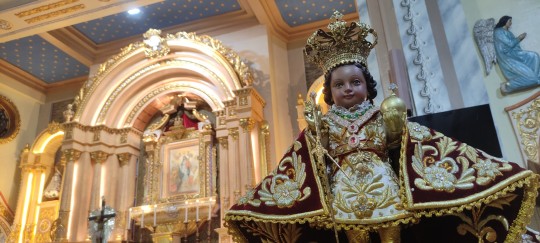


THE DESCRIPTION OF THE SANTO NIÑO (Sto. Niño) The Ultimate Crown Jewel of Filipino Devotion Feast Day: Third Sunday of January
Pit Señor! The feast of the Santo Niño is celebrated every year on the third Sunday of January.
On April 14, 1521, the image of the Holy Child was presented to the wife of Rajah Humabon (later named Don Carlos), Hara Humamay (later named Queen Juana of Cebu) by Ferdinand Magellan after her baptism. On the same day, 800 Cebuanos were also baptized.
The Italian scholar and chronicler of the expedition, Antonio Pigafetta wrote: 'After dinner, Fr. Pedro Valderrama (the fleet chaplain) and some others went ashore to baptize the queen. We conducted her to the platform and she was made to sit on a cushion. I showed her an image of Our Lady, a very beautiful wooden Child Jesus and a cross. After her baptism, she asked us to give her the little Child Jesus to keep in place of her idols.'
After Magellan's death days later on April 27th, and the massacre of 27 other Spaniards by the Cebuanos, the survivors hurriedly embarked and continued their voyage to Spain. For more than four decades (40 years), the cross and the Santo Niño left behind by Magellan remained as silent witnesses of Jesus Christ among the Filipinos.
The Spaniards came back to the Philippines in 1565, under the command of Gen. Miguel López de Legazpi. A soldier of the expedition, Juan Camus, found the image of the Santo Niño inside the house of a native.
This was attested by Fr. Andres de Urdaneta, the Augustinian chronicler of the expedition, and many other witnesses. The image has been venerated by the Filipinos ever since, and it is preserved at the magnificent Basilica del Santo Niño (formally called Basílica Menor del Santo Niño de Cebú or Minor Basilica of the Holy Child of Cebú) in Cebu. Today, the original image is permanently encased behind bulletproof glass inside its chapel.
The wooden statue of the Child King, of the style of those made in Belgium, synthesizes the childhood and the kingship of Christ.
The King of the Universe, who became a little child, keeps telling us in the Holy Gospel according to Matthew: 'Unless you turn and become like children, you will not enter the kingdom of heaven. Whoever humbles himself like this child, is the greatest in the kingdom of heaven.'
©2024 photos by yours truly
1 note
·
View note
Text
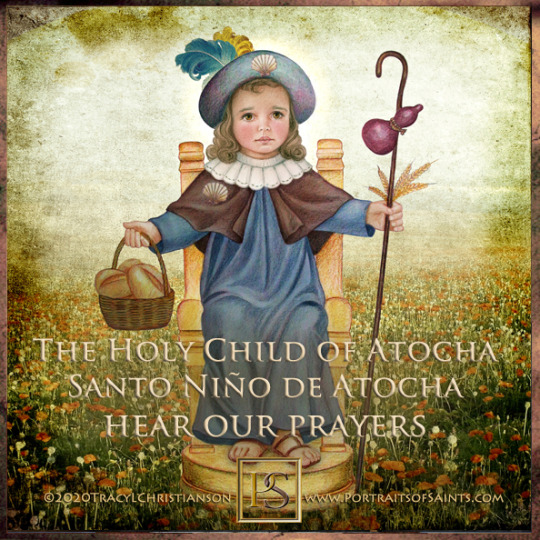
Merry Christmas
The Holy Child of Atocha (Santo Niño de Atocha)
13th century
Feast Day: December 25
Patronage: Mexico, children, pilgrims, prisoners, travelers
The devotion to the Holy Infant of Atocha originated in Spain during the Muslim invasion. In Atocha, the Moors kept the Catholic men imprisoned and would only allow children 12 and under to bring them food and drink. After fervent prayer from families of the town to the Mother of God under the title of Our Lady of Atocha, a child pilgrim miraculously appeared bringing a basket of food and a gourd filled with drink to the prisoners that never emptied. The townspeople realized that it was the Child Jesus. In the church, the shoes of the Infant in the statue of Our Lady of Atocha were worn and dusty. Each time the village women replaced them, they found them worn and dusty again.
Prints, plaques & holy cards available for purchase. (website)
25 notes
·
View notes
Text
Christmas in the Philippines stands out for its unique and festive traditions, rooted in a mix of religious devotion, cultural heritage, and a warm, family-oriented society. Here’s what makes it distinctive:
1. The Longest Christmas Season
Begins in September: Filipinos start preparing for Christmas as soon as the “Ber” months (September to December) arrive. Decorations, carols, and festivities begin months before December 25.
Ends in January: The season often extends until the Feast of the Santo Niño (Third Sunday of January) or even up to the Feast of the Three Kings.
2. Simbang Gabi (Night Masses)
A series of nine dawn masses held from December 16 to 24. It’s a deeply spiritual tradition, reflecting the strong Catholic faith of the Filipino people.
Attendees believe that completing all nine masses can grant special blessings or fulfill a wish.
3. Parols (Christmas Lanterns)
The parol, a colorful, star-shaped lantern, symbolizes the Star of Bethlehem. Made from bamboo, paper, or capiz shells, it decorates homes, streets, and public spaces.
Pampanga, the “Christmas Capital,” is famous for its grand Giant Lantern Festival.
4. Noche Buena
A grand family feast on Christmas Eve, after the midnight mass. Traditional dishes include lechón (roast pig), ham, queso de bola (cheese ball), spaghetti, and various Filipino desserts like bibingka and puto bumbong.
5. Caroling and Street Performances
Groups of children and adults go door-to-door singing Christmas carols, often accompanied by makeshift instruments.
Many people give small cash gifts or snacks as tokens of appreciation.
6. Filipino Hospitality and Balikbayan Tradition
Many overseas Filipino workers (OFWs) return home during Christmas, making it a time for family reunions.
Gifts sent by OFWs, often called balikbayan boxes, symbolize love and connection across distances.
7. Christmas Parties and Kris Kringle
Companies, schools, and communities organize early Christmas parties, often including Monito-Monita (a local version of Secret Santa).
Parties feature games, dancing, and festive food.
8. Spiritual and Communal Spirit
Christmas is centered on faith, family, and community. Activities like church events, outreach programs, and neighborhood gatherings foster a sense of togetherness and generosity.
9. Unique Christmas Music
Filipinos love Christmas music, with traditional carols and local hits like Jose Mari Chan’s “Christmas in Our Hearts” and “A Perfect Christmas” being played endlessly during the season.
Christmas in the Philippines is a mix of solemn religious observance and vibrant, joyful celebration, emphasizing family, faith, and community. It reflects the warmth and resilience of Filipino culture.
#barong tagalog#philippines#barong#pinoy#philippines fashion#barongtagalog#barongtagalogforwomen#womensfashion#shopping#barongs#christmassale#christmas#christmas sale#holidaydeals#holidayshopping#christmas deals
2 notes
·
View notes
Note
what's philippines' relationship with faith?

Yup, I have hwspirilovebot for seatalia but that's alright! I can answer asks here too
And this news right here sums up Filipino faith:

Okay but jokes aside, Piri is definitely religious and superstitious. Spiritual? Hmmm. He will get there one day. Besides, how Piri's relationship with faith is viewed depends on his age. Here's an oversimplified timeline of what religions dominated the PH archipelago through the centuries:
Ancient: Animism
800s: Buddhism and Hinduism
1300s: Islam
1500s: Christianity
Modern: Buddhism, Taoism, and Hinduism from Chinese and Indian immigrants, Judaism from Jewish refugees, more Christian denominations, etc.
Some headcanon that Piri is a representation of a precolonial chiefdom, for example, if he was Sugbu (modern day Cebu), he would be practicing a combination of Animism, Hinduism, and Buddhism, before being baptised as a Roman Catholic in the 1500s. If he was Maynila, then it would be the aforementioned 3 with Islam (but he still ate pork in that era, lmao). Some also headcanon that Piri was born in 1521 when Magellan gifted Rajah Humabon with the Santo Niño upon the latter's baptism, and in that case, his relationship with faith will also be different (@sweaty-clouds can expound on this better than I do 🤧)
I view that Piri was born due to the intramarriages and intramigration within the archipelago that came to be known as the Philippines. I have no specific date yet, but it's sometime in the 1300s or earlier.
There are tons of belief systems in the country, different set of Deities and Anitos for every ethnolinguistic group and indigenous group. Some are remembered, many are forgotten. Not all are worshipped as the dominant religions are monotheistic.
The Philippines is a Roman Catholic-dominant (but under the constitution, the church and the state are separate, and you are free to practice your religion), and my Piri practiced it under Spanish colonization until today. Discrimination against indigenous people and Muslims are rampant, and Christian denominations fight each other on who worships God better and who goes to Heaven (spoilers: none of you)
Now, faith.
Faith in Tagalog has many words but the one I hear the most in churches is "sampalataya" which came from the Sanskrit word, sampratyaya (सम्प्रत्यय). We often use Diyos but when reading folklores, you will regularly come across the word Bathala which also came from Sanskrit: Batthara (भट्टार). Our fairies, Diwata, came from Sanskrit as well: Devata (देवता). Despite the dominance of Catholic faith, the Hindu-Buddhist roots are still present. Other precolonial anitist beliefs such as dancing the Obando Fertility Rites are also still practiced. We politely say excuse me (tabi-tabi po) when hiking in forests in the belief that it is the realm of spiritual entities or that the environment itself has spirits.
My version of Piri grew up practicing many belief systems, depending on which personification was his assigned guardian, but if you want to survive, you have to assimilate to the dominant culture. He was definitely a sacristan, until he became a revolutionary. He still prays, attends the mass, volunteers in the church, and participates in holy days and feasts for almost every saint today.
He doesn't sweep the floor at night as it sweeps away luck, and maybe it's just a coincidence that the Goddess Lakshmi will walk out of your house if you sweep your place after sunset. He wears an agimat or anting-anting (amulet) and despite having a medical degree, he still carries a lana (a concoction of oil and herbs to ward off evil entities). He can exorcise demons and drive away tiktik (that baby-eating monster targetting pregnant women) too. Perhaps he has an altar in his house that has both the crucifix and a Buddha statue. Oh, and he still gives babies that red and black beaded bracelet and the red pouch for protection. Pwera Usog or Pwera Buyag! (Fuera Curse, to repel a hex)
Piri's not agnostic, but he sure rolls his eyes during homilies when the priests shuns people who believes in precolonial or pagan beliefs, and he definitely cringes at fuccboys who have John 3:16 in their bio.
What else did I miss? Piri's Catholic guilt? The way my dad did the sign of the cross in front of a giant Buddha statue when we went to Thailand? or one of my friends visiting my other friend's condo and saying "Yup. This is bad Fung Shui", but there's a rosary on his doorknob so it balances out
There are tons of mythological creatures too, and the babaylan who was demonized and now referred to as a mangkukulam, but my brain is just not braining at the moment and I feel like I answered more about religion rather than faith but I still hope this still answers your question, anon.
TLDR: Folk Christianity, but this needs more thoughts from Filipinos of other religions
#hetalia#hetalia world stars#hws philippines#hetalia headcanons#deprussing answers#kung tuyo na ang luha mo aking bayan#hetalia philippines
17 notes
·
View notes
Text
9/9
The annual feast of Señor Santo Niño has always held a peculiar sway over my soul. It's a time when the year's rhythms seem to reset, a period of introspection that strangely echoes the childlike wonder that permeates the festivities. This January, as I completed the novena masses, I couldn't help but reflect on how deeply this tradition has shaped my life.
One particular novena mass remains etched in my memory. Held beneath the starry canopy of the night sky, the air was alive with the music and the murmur of prayers. We hadn't been assigned the task, but a spontaneous urge moved us to rise and begin dancing. Our initial movements were hesitant, unsure, but as the rhythm of the music washed over us, our bodies began to sway in time. And then, something magical happened. One by one, members of the congregation joined us, their faces illuminated by the flickering candles, their movements a joyful testament to the shared spirit that united us
Another year, we were challenged to channel our creativity by painting the faces of children. It was a delightful chaos, a blur of vibrant colors and infectious laughter. We learned that joy can be found in the simplest of gestures, and that even small acts of service can be incredibly rewarding.
In a truly remarkable turn of events, 2019 witnessed a groundbreaking discovery. During a significant mass, Bishop Bong unveiled a startling revelation: after 82 long years, meticulous examination of the revered Sto. Niño statue revealed that it bore a heart, not a globe, as previously believed. This profound finding led to a rechristening of the beloved icon as the Sto. Niño de Pagadian. The year 2020 then witnessed a momentous occasion – the fresh unveiling and coronation of the Sto. Niño de Pagadian, a testament to the enduring power of faith and the ongoing unfolding of sacred mysteries.
For me, these nine days are a sacred space, a time to shed the excesses of the previous year – the endless parties, the late nights, the distractions that pull me away from my true north. It's a period of recalibration, a chance to re-evaluate my priorities, to commit to my goals with renewed focus and unwavering determination. This year, the sacrifice was profound. Early mornings, early nights, a deliberate withdrawal from the usual weekend indulgences. But the reward has been immeasurable – a profound sense of inner peace and a renewed clarity of purpose.
0 notes
Text
Holidays 1.10
Holidays
Aerial Photography Day
Autogyro Days
Bangabandhu Homecoming Day (Bangladesh)
Common Sense Day
Cross the Rubicon Day
Dawn Appreciation Day
Dial 110 Day (a.k.a. Emergency Number Day; Japan)
Fête du Vodoun (Benin)
45 Record Adapter Day (a.k.a. 45 RPM Day)
Gypsum Day (French Republic)
Inner Wheel Day
International Take the High Road Day
International Tintin Day
Laughing Day
League of Nations Day
London Underground Day (UK)
Margaret Thatcher Day (Falkland Islands)
Martyrs’ Day (Panama)
National Cut Your Energy Costs Day
National Day of Loneliness
National Guard Day (Kazakhstan)
National Police Day (China)
National Prank Day
National Shareholders Day
National Voodoo Day (Benin)
Peculiar People Day
Penny Post Day
Rasputin Day
Recorder Day (Germany)
Rubicon Day
Sluzzle Tag (from “Gumball”)
Speck Day
Sturdy Flat-Heeled Shoes Appreciation Day
Unicycle Day
Working Journalists’ Day (Turkey)
Food & Drink Celebrations
Bittersweet Chocolate Day
Champagne and Fries Day
Fritkot Day
Indian Tea Day (UK)
National Booch (Kombucha) Day
National Oysters Rockefeller Day
Where's the Beef Day
Nature Celebrations
Box Tree Day (Endure & Overcome; Korean Flower Days)
Houseplant Appreciation Day
Save the Eagles Day
Independence, Flag & Related Days
Florida (Seceded from the U.S.; 1861)
Hanseatic and Confederate States of Achsen (Declared; 2020) [unrecognized]
League of Nations (Formally Established; 1920)
Majority Rule Day (Bahamas)
MYCUS Republic (Declared; 2018, Dissolved 2019) [unrecognized]
Thomaland (Declared; 2018) [unrecognized]
New Year’s Days
Iroquois New Year (Native American)
2nd Friday in January
Comfort Food Friday [Every Friday]
Fish & Chips Friday [2nd Friday of Each Month]
Five For Friday [Every Friday]
Flashback Friday [Every Friday]
Follow Friday [2nd Friday of Each Month]
Friday Finds [Every Friday]
Frugal Friday [2nd Friday of Each Month]
Fry Day (Pastafarian; Fritism) [Every Friday]
Lee-Jackson Day (Virginia) [Friday before MLK Day]
National Hockey Mom Day [2nd Friday]
Quitters Day [2nd Friday]
TGIF (Thank God It's Friday) [Every Friday]
Weekly Holidays beginning January 10 (1st Full Week of January)
Sinulog (Philippines) [thru 1.20]
Festivals Beginning January 10, 2025
Brussels Motor Show (Brussels, Belgium) [thru 1.19]
Cotton Bowl (Arlington, Texas)
Deadwood Red Dirt Festival (Deadwood, South Dakota)
Dine Downtown Sacramento (Sacramento, California) [thru 1.19]
Dine Out Santa Maria Style & Craft Cocktail Contest (Santa Maria Valley, California) [thru 2.9]
Fan Expo New Orleans (New Orleans, Louisiana) [thru 1.12]
Golden Lights (Aukland, New Zealand)
Japan Meeting of Furries (Toyohashi, Japan) [thru 1.12]
KNID Agrifest (Enid, Oklahoma) [thru 1.11]
Niagara Icewine Festival (Niagara Falls, Canada) [thru 1.26]
North American International Auto Show (Detroit, Michigan) [thru 1.20]
Virginia Fly Fishing and Wine Festival (Doswell, Virginia) [thru 1.11]
Santa Cruz Fungus Fair (Santa Cruz, California) [thru 1.12]
Sarasota Seafood & Music Festival (Sarasota, Florida) [thru 1.12]
Scalloway Fire Festival (Shetland Islands, Scotland)
Sinulog [Santo Niño Festival] (Cebú, Philippines) [thru 1.19]
Whittlesea Straw Bear Festival (Whittlesey, England) [thru 1.12]
Feast Days
Agatho, Pope (Roman Catholic)
Behnam, Sarah, and the Forty Martyrs (Armenian Apostolic Church)
Dermot (a.k.a. Diarmaid; Christian; Saint)
Doge of Venice (Christian; Saint)
Edhadh (Celtic Book of Days)
The Fairy Lunch (Shamanism)
Feast of Dreams (Iroquois Native Americans; Everyday Wicca)
Geraint of Dumnonia Feast Day (Wales)
Gonzalvo (Christian; Saint)
Gregory of Nyssa (Christian; Saint)
The Hungry Family (Muppetism)
Ilithyia’s Day of the Midwives (Pagan)
John the Good (Christian; Saint)
Leonie Aviat (Christian; Saint)
Marcian of Constantinople (Christian; Saint)
Mao Tse Tung Day (Church of the SubGenius; Saint)
Menu (Positivist; Saint)
Mid-Winter Festival (Ancient Rome)
Obadiah (Coptic Church)
Peculiar People Day (Pastafarian)
Peter Orseolo (Christian; Saint)
Pope Agatho (Roman Catholic)
Sacred Bath (Starza Pagan Book of Days)
Vaudoun Day (Vodoo Festival; Benin)
William Laud (Anglican Communion)
William of Bourges (Christian; Saint)
William of Donjeon (Christian; Saint)
World Hindi Day
Secular Saints Days
Stephen Ambrose (History)
Ray Bolger (Entertainment)
Howard C. Christy (Art)
Eldzier Cortor (Art)
Jim Croce (Music)
Donald Fagen (Music)
George Foreman (Sports)
John Held Jr. (Art)
Paul Henried (Entertainment)
Barbara Hepworth (Art)
Walter Hill (Entertainment)
Robinson Jeffers (Literature)
Jeffrey Catherine Jones (Art)
Dorianne Laux (Literature)
Philip Levine (Literature)
Willie McCovey (Sports)
Pat Benatar (Music)
Max Roach (Music)
Yong Mun Sen (Art)
Johannes Zick (Art)
Heinrich Zille (Art)
Hebrew Calendar Holidays [Begins at Sundown Day Before]
Asarah B’Tevet [10 Teveth]
Lucky & Unlucky Days
Binary Day [101] (2 of 9)
Butsumetsu (仏滅 Japan) [Unlucky all day.]
Perilous Day (13th Century England) [6 of 32]
Very Unlucky Day (Grafton’s Manual of 1565) [5 of 60]
Premieres
Alice the Golf Bug (Ub Iwerks Disney Cartoon; 1927)
Arsenic and Old Lace, by Joseph Kesselring (Play; 1941)
The Back-Seat Drivers or Mashed Landing (Rocky & Bullwinkle Cartoon, S1, Ep. 13; 1960)
Baton Bunny (WB LT Cartoon; 1959)
Bullwinkle’s Water Follies or Antlers Aweigh (Rocky & Bullwinkle Cartoon, S1, Ep. 14; 1960)
The City and the Pillar, by Gore Vidal (Novel; 1948)
Common Sense, by Thomas Paine (Pamphlet; 1776)
Crying Wolf (Terrytoons Mighty Mouse Cartoon; 1947)
Evangelion 3.0: You Can (Not) Redo (Animated Film; 2014)
Far From Heaven (Film; 2003)
The Feud (Terrytoons Cartoon; 1936)
Figures—Doubles—Prismes, by Pierre Boulez (Orchestral Composition; 1964)
Fraggle Rock (TV Series; 1983)
The Greatest Show on Earth (Film; 1952)
The Hand That Rocks the Cradle (Film; 1992)
Her (Film; 2014)
Inherit the Wind, by Jerome Lawrence (Play; 1955)
Introducing… The Beatles (Album; 1964)
The Lamp Lighter (Oswald the Lucky Rabbit Cartoon; 1938)
Loop (Pixar SparkShorts Cartoon; 2020)
Man and His Symbols, by C.G. Jung (Science Book; 1963)
Metropolis (Film; 1927)
The Missing Mouse (Tom & Jerry Cartoon; 1953)
1917 (Film; 2020)
Paradise City, by Guns ’N’ Roses (Song; 1989)
Polyglot Bible (Spanish Bible; 1514)
Problem Pappy (Fleischer Popeye Cartoon; 1941)
Recess: School’s Out (Animated Film; 2001)
Silly Symphony (Newspaper Comic Strip; 1932)
Silvertone, by Chris Isaak (Album; 1985)
The Snowy Day, by Ezra Jack Keats (Children’s Book; 1962)
The Sopranos (TV Series; 1999)
Standard Oil Co. (Incorporated; 1870)
Tech Suppork (WB Cartoon; 2002)
Three Places in New England, by Charles Ives (Orchestral Composition; 1931)
Timber (Disney Cartoon; 1941)
Tintin in the Land of the Soviets, by Hergé (Graphic Novel; 1929) [Tintin #1]
Underwater (Film; 2020)
University of South Carolina (School Founded; 1805)
The Villain’s Curse (Terrytoons Cartoon; 1932)
What a Little Sneeze Will Do (Terrytoons Cartoon; 1941)
Why Do Fools Fall in Love, by Frankie Lymon (Song; 1956)
Today’s Name Days
Leonie, Paulus (Austria)
Agaton, Aldo, Dobriša, Dobroslav (Croatia)
Břetislav (Czech Republic)
Paul (Denmark)
Talva, Talve, Talvi (Estonia)
Nyyrikki (Finland)
Guillaume (France)
Leonie, Paul (Germany)
Melánia (Hungary)
Aldo (Italy)
Dorisa, Karmena, Tatjana (Latvia)
Agatonas, Ginvilas, Ginvilė, Palemonas, Vilhelmas (Lithuania)
Sigmund, Sigrun (Norway)
Agaton, Dobrosław, Jan, Nikanor, Paweł, Wilhelm (Poland)
Antipa, Grigorie (Romania)
Dáša (Slovakia)
Gonzalo, Nicanor (Spain)
Sigbritt, Sigurd (Sweden)
Bethany, Darby, Derby, Dermot, Kermit, Kermore, Rhett (USA)
Today is Also…
Day of Year: Day 10 of 2025; 355 days remaining in the year
ISO: Day 5 of Week 2 of 2025
Celtic Tree Calendar: Ruis (Elder) [Day 20 of 28]
Chinese: Month 12 (Ding-Chou), Day 11 (Ji-Mao)
Chinese Year of the: Dragon 4722 (until January 29, 2025) [Wu-Chen]
Coptic: 2 Tubah 1741
Hebrew: 10 Teveth 5785
Islamic: 10 Rajab 1446
J Cal: 10 White; Threesday [10 of 30]
Julian: 28 December 2024
Moon: 88%: Waxing Gibbous
Positivist: 10 Moses (1st Month) [Menu]
Runic Half Month:Peorth (Womb, Dice Cup) [Day 4 of 15]
Season: Winter (Day 21 of 90)
Week: 1st Full Week of January
Zodiac: Capricorn (Day 20 of 30)
0 notes
Text
Holidays 1.10
Holidays
Aerial Photography Day
Autogyro Days
Bangabandhu Homecoming Day (Bangladesh)
Common Sense Day
Cross the Rubicon Day
Dawn Appreciation Day
Dial 110 Day (a.k.a. Emergency Number Day; Japan)
Fête du Vodoun (Benin)
45 Record Adapter Day (a.k.a. 45 RPM Day)
Gypsum Day (French Republic)
Inner Wheel Day
International Take the High Road Day
International Tintin Day
Laughing Day
League of Nations Day
London Underground Day (UK)
Margaret Thatcher Day (Falkland Islands)
Martyrs’ Day (Panama)
National Cut Your Energy Costs Day
National Day of Loneliness
National Guard Day (Kazakhstan)
National Police Day (China)
National Prank Day
National Shareholders Day
National Voodoo Day (Benin)
Peculiar People Day
Penny Post Day
Rasputin Day
Recorder Day (Germany)
Rubicon Day
Sluzzle Tag (from “Gumball”)
Speck Day
Sturdy Flat-Heeled Shoes Appreciation Day
Unicycle Day
Working Journalists’ Day (Turkey)
Food & Drink Celebrations
Bittersweet Chocolate Day
Champagne and Fries Day
Fritkot Day
Indian Tea Day (UK)
National Booch (Kombucha) Day
National Oysters Rockefeller Day
Where's the Beef Day
Nature Celebrations
Box Tree Day (Endure & Overcome; Korean Flower Days)
Houseplant Appreciation Day
Save the Eagles Day
Independence, Flag & Related Days
Florida (Seceded from the U.S.; 1861)
Hanseatic and Confederate States of Achsen (Declared; 2020) [unrecognized]
League of Nations (Formally Established; 1920)
Majority Rule Day (Bahamas)
MYCUS Republic (Declared; 2018, Dissolved 2019) [unrecognized]
Thomaland (Declared; 2018) [unrecognized]
New Year’s Days
Iroquois New Year (Native American)
2nd Friday in January
Comfort Food Friday [Every Friday]
Fish & Chips Friday [2nd Friday of Each Month]
Five For Friday [Every Friday]
Flashback Friday [Every Friday]
Follow Friday [2nd Friday of Each Month]
Friday Finds [Every Friday]
Frugal Friday [2nd Friday of Each Month]
Fry Day (Pastafarian; Fritism) [Every Friday]
Lee-Jackson Day (Virginia) [Friday before MLK Day]
National Hockey Mom Day [2nd Friday]
Quitters Day [2nd Friday]
TGIF (Thank God It's Friday) [Every Friday]
Weekly Holidays beginning January 10 (1st Full Week of January)
Sinulog (Philippines) [thru 1.20]
Festivals Beginning January 10, 2025
Brussels Motor Show (Brussels, Belgium) [thru 1.19]
Cotton Bowl (Arlington, Texas)
Deadwood Red Dirt Festival (Deadwood, South Dakota)
Dine Downtown Sacramento (Sacramento, California) [thru 1.19]
Dine Out Santa Maria Style & Craft Cocktail Contest (Santa Maria Valley, California) [thru 2.9]
Fan Expo New Orleans (New Orleans, Louisiana) [thru 1.12]
Golden Lights (Aukland, New Zealand)
Japan Meeting of Furries (Toyohashi, Japan) [thru 1.12]
KNID Agrifest (Enid, Oklahoma) [thru 1.11]
Niagara Icewine Festival (Niagara Falls, Canada) [thru 1.26]
North American International Auto Show (Detroit, Michigan) [thru 1.20]
Virginia Fly Fishing and Wine Festival (Doswell, Virginia) [thru 1.11]
Santa Cruz Fungus Fair (Santa Cruz, California) [thru 1.12]
Sarasota Seafood & Music Festival (Sarasota, Florida) [thru 1.12]
Scalloway Fire Festival (Shetland Islands, Scotland)
Sinulog [Santo Niño Festival] (Cebú, Philippines) [thru 1.19]
Whittlesea Straw Bear Festival (Whittlesey, England) [thru 1.12]
Feast Days
Agatho, Pope (Roman Catholic)
Behnam, Sarah, and the Forty Martyrs (Armenian Apostolic Church)
Dermot (a.k.a. Diarmaid; Christian; Saint)
Doge of Venice (Christian; Saint)
Edhadh (Celtic Book of Days)
The Fairy Lunch (Shamanism)
Feast of Dreams (Iroquois Native Americans; Everyday Wicca)
Geraint of Dumnonia Feast Day (Wales)
Gonzalvo (Christian; Saint)
Gregory of Nyssa (Christian; Saint)
The Hungry Family (Muppetism)
Ilithyia’s Day of the Midwives (Pagan)
John the Good (Christian; Saint)
Leonie Aviat (Christian; Saint)
Marcian of Constantinople (Christian; Saint)
Mao Tse Tung Day (Church of the SubGenius; Saint)
Menu (Positivist; Saint)
Mid-Winter Festival (Ancient Rome)
Obadiah (Coptic Church)
Peculiar People Day (Pastafarian)
Peter Orseolo (Christian; Saint)
Pope Agatho (Roman Catholic)
Sacred Bath (Starza Pagan Book of Days)
Vaudoun Day (Vodoo Festival; Benin)
William Laud (Anglican Communion)
William of Bourges (Christian; Saint)
William of Donjeon (Christian; Saint)
World Hindi Day
Secular Saints Days
Stephen Ambrose (History)
Ray Bolger (Entertainment)
Howard C. Christy (Art)
Eldzier Cortor (Art)
Jim Croce (Music)
Donald Fagen (Music)
George Foreman (Sports)
John Held Jr. (Art)
Paul Henried (Entertainment)
Barbara Hepworth (Art)
Walter Hill (Entertainment)
Robinson Jeffers (Literature)
Jeffrey Catherine Jones (Art)
Dorianne Laux (Literature)
Philip Levine (Literature)
Willie McCovey (Sports)
Pat Benatar (Music)
Max Roach (Music)
Yong Mun Sen (Art)
Johannes Zick (Art)
Heinrich Zille (Art)
Hebrew Calendar Holidays [Begins at Sundown Day Before]
Asarah B’Tevet [10 Teveth]
Lucky & Unlucky Days
Binary Day [101] (2 of 9)
Butsumetsu (仏滅 Japan) [Unlucky all day.]
Perilous Day (13th Century England) [6 of 32]
Very Unlucky Day (Grafton’s Manual of 1565) [5 of 60]
Premieres
Alice the Golf Bug (Ub Iwerks Disney Cartoon; 1927)
Arsenic and Old Lace, by Joseph Kesselring (Play; 1941)
The Back-Seat Drivers or Mashed Landing (Rocky & Bullwinkle Cartoon, S1, Ep. 13; 1960)
Baton Bunny (WB LT Cartoon; 1959)
Bullwinkle’s Water Follies or Antlers Aweigh (Rocky & Bullwinkle Cartoon, S1, Ep. 14; 1960)
The City and the Pillar, by Gore Vidal (Novel; 1948)
Common Sense, by Thomas Paine (Pamphlet; 1776)
Crying Wolf (Terrytoons Mighty Mouse Cartoon; 1947)
Evangelion 3.0: You Can (Not) Redo (Animated Film; 2014)
Far From Heaven (Film; 2003)
The Feud (Terrytoons Cartoon; 1936)
Figures—Doubles—Prismes, by Pierre Boulez (Orchestral Composition; 1964)
Fraggle Rock (TV Series; 1983)
The Greatest Show on Earth (Film; 1952)
The Hand That Rocks the Cradle (Film; 1992)
Her (Film; 2014)
Inherit the Wind, by Jerome Lawrence (Play; 1955)
Introducing… The Beatles (Album; 1964)
The Lamp Lighter (Oswald the Lucky Rabbit Cartoon; 1938)
Loop (Pixar SparkShorts Cartoon; 2020)
Man and His Symbols, by C.G. Jung (Science Book; 1963)
Metropolis (Film; 1927)
The Missing Mouse (Tom & Jerry Cartoon; 1953)
1917 (Film; 2020)
Paradise City, by Guns ’N’ Roses (Song; 1989)
Polyglot Bible (Spanish Bible; 1514)
Problem Pappy (Fleischer Popeye Cartoon; 1941)
Recess: School’s Out (Animated Film; 2001)
Silly Symphony (Newspaper Comic Strip; 1932)
Silvertone, by Chris Isaak (Album; 1985)
The Snowy Day, by Ezra Jack Keats (Children’s Book; 1962)
The Sopranos (TV Series; 1999)
Standard Oil Co. (Incorporated; 1870)
Tech Suppork (WB Cartoon; 2002)
Three Places in New England, by Charles Ives (Orchestral Composition; 1931)
Timber (Disney Cartoon; 1941)
Tintin in the Land of the Soviets, by Hergé (Graphic Novel; 1929) [Tintin #1]
Underwater (Film; 2020)
University of South Carolina (School Founded; 1805)
The Villain’s Curse (Terrytoons Cartoon; 1932)
What a Little Sneeze Will Do (Terrytoons Cartoon; 1941)
Why Do Fools Fall in Love, by Frankie Lymon (Song; 1956)
Today’s Name Days
Leonie, Paulus (Austria)
Agaton, Aldo, Dobriša, Dobroslav (Croatia)
Břetislav (Czech Republic)
Paul (Denmark)
Talva, Talve, Talvi (Estonia)
Nyyrikki (Finland)
Guillaume (France)
Leonie, Paul (Germany)
Melánia (Hungary)
Aldo (Italy)
Dorisa, Karmena, Tatjana (Latvia)
Agatonas, Ginvilas, Ginvilė, Palemonas, Vilhelmas (Lithuania)
Sigmund, Sigrun (Norway)
Agaton, Dobrosław, Jan, Nikanor, Paweł, Wilhelm (Poland)
Antipa, Grigorie (Romania)
Dáša (Slovakia)
Gonzalo, Nicanor (Spain)
Sigbritt, Sigurd (Sweden)
Bethany, Darby, Derby, Dermot, Kermit, Kermore, Rhett (USA)
Today is Also…
Day of Year: Day 10 of 2025; 355 days remaining in the year
ISO: Day 5 of Week 2 of 2025
Celtic Tree Calendar: Ruis (Elder) [Day 20 of 28]
Chinese: Month 12 (Ding-Chou), Day 11 (Ji-Mao)
Chinese Year of the: Dragon 4722 (until January 29, 2025) [Wu-Chen]
Coptic: 2 Tubah 1741
Hebrew: 10 Teveth 5785
Islamic: 10 Rajab 1446
J Cal: 10 White; Threesday [10 of 30]
Julian: 28 December 2024
Moon: 88%: Waxing Gibbous
Positivist: 10 Moses (1st Month) [Menu]
Runic Half Month:Peorth (Womb, Dice Cup) [Day 4 of 15]
Season: Winter (Day 21 of 90)
Week: 1st Full Week of January
Zodiac: Capricorn (Day 20 of 30)
1 note
·
View note
Text
Sofronio Española Ati-Atihan

The Ati-atihan celebrated every 3rd week of Janaury at Sofronio Española, Palawan. Name in honor of the indigenous Ati tribe, this festival enerates the Santo Niño, the infant Jesus. The name ‘Ati-Atihan’ translates to ’emulate the Ati people’, reflecting the festival’s homage to indigenous culture and its significant religious aspect dedicated to the Santo Niño. Known throughout the Philippines, Ati-Atihan is also dubbed “The Mother of all Philippine Festivals,”
This vibrant week-long celebration includes music, dance, elaborate costumes, parades, and feasts, epitomizing Filipino culture and traditions. The street of Sofronio Española burst into life with religious processions, lively street parades, and the Sadsad, a parade marked by participants rhythmically moving to the beats of marching bands. This festival always held during Sunday and the day before Sunday the members of every tribe will go to Santo Niño Parish to bring Santo NIño there. Ati-Atihan represents a seamless fusion of indigenous cultural practices with the Catholic faith, highlighting its dual importance in both religious and cultural contexts.
Reference:
0 notes
Text
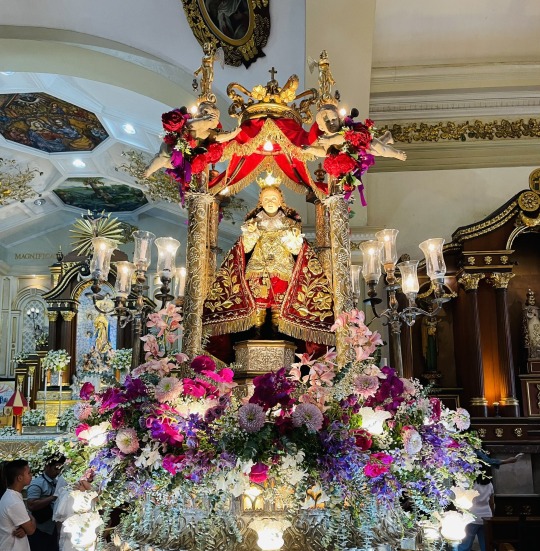


ABS-CBN on Twitter @ABSCBNNews:
LOOK: More than 200 images of the Santo Niño are joining the solemn procession in honor of the feast of Santo Niño de Malolos in Bulacan on Sunday, January 28.
WATCH: More festivities to celebrate the feast of Santo Niño de Malolos in Bulacan, one of the grandest feasts in honor of the Child Jesus in Luzon.
via @JervisManahan
2024 Jan. 28
1 note
·
View note
Text

"Oh Jesus, how little known is the merciful love of your heart!" - #SaintThérèseofLisieux
Inspired by yesterday's Feast of Santo Niño de Cebu, I hope you enjoy today's Image and Quote!
📷 Heart of Jesus / © KatieDobies / #GettyImages. #Catholic_Priest #CatholicPriestMedia
10 notes
·
View notes
Text
Sacred Heart Formation House, Cagayan de Oro, Feast of the Santo Niño
View On WordPress
0 notes
Text

January 15 | Feast of the Santo Niño (Sto. Niño)
"Children are first in God's kingdom because of their generosity and spontaneity, easily sensing the needs of others. In other words, to possess the heart of a child does not mean being simply dependent on others but also actively participating in mission. Adults can do this only, if they imitate the generosity of children. Are children capable of intense holiness? As first citizens in God's kingdom, they surely can be shining models of holiness. The greatest sinners and criminals on our planet are adults. Children can only be innocent or saintly." -Fr. Tim Melliza, SSP
Despite there's a temporary power outage a few hours ago (due to a damaged transformer from nearby town), I have the chance to shot at this picture. Anyways, on to the description after the jump.
Pit Señor! The feast of the Santo Niño is celebrated every year on the third Sunday of January.
On April 14, 1521, the image of the Holy Child was presented to the wife of Rajah Humabon (later named Don Carlos), Hara Humamay (later named Queen Juana of Cebu) by Ferdinand Magellan after her baptism. On the same day, 800 Cebuanos were also baptized.
The Italian scholar and chronicler of the expedition, Antonio Pigafetta wrote: 'After dinner, Fr. Pedro Valderrama (the fleet chaplain) and some others went ashore to baptize the queen. We conducted her to the platform and she was made to sit on a cushion. I showed her an image of Our Lady, a very beautiful wooden Child Jesus and a cross. After her baptism, she asked us to give her the little Child Jesus to keep in place of her idols.'
After Magellan's death days later on April 27th, and the massacre of 27 other Spaniards by the Cebuanos, the survivors hurriedly embarked and continued their voyage to Spain. For more than four decades (40 years), the cross and the Santo Niño left behind by Magellan remained as silent witnesses of Jesus Christ among the Filipinos.
The Spaniards came back to the Philippines in 1565, under the command of Gen. Miguel López de Legazpi. A soldier of the expedition, Juan Camus, found the image of the Santo Niño inside the house of a native. This was attested by Fr. Andres de Urdaneta, the Augustinian chronicler of the expedition, and many other witnesses. The image has been venerated by the Filipinos ever since, and it is preserved at the magnificent Basilica del Santo Niño (formally called Basílica Menor del Santo Niño de Cebú or Minor Basilica of the Holy Child of Cebú) in Cebu. Today, the original image is permanently encased behind bulletproof glass inside its chapel.
The wooden statue of the Child King, of the style of those made in Belgium, synthesizes the childhood and the kingship of Christ.
The King of the Universe, who became a little child, keeps telling us in the Holy Gospel according to Matthew: 'Unless you turn and become like children, you will not enter the kingdom of heaven. Whoever humbles himself like this child, is the greatest in the kingdom of heaven.'
©2023 photo by yours truly via POCO X3
#random stuff#catholic#feast day#santo niño#sto. niño#philippines#cellphotography#cellphone photography
1 note
·
View note
Text
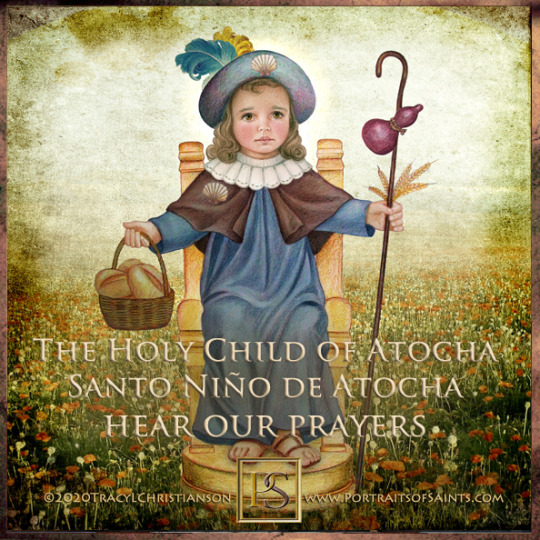
The Holy Child of Atocha (Santo Niño de Atocha)
13th century
Feast Day: December 25
Patronage: Mexico, children, pilgrims, prisoners, travelers
The devotion to the Holy Infant of Atocha originated in Spain during the Muslim invasion. In Atocha, the Moors kept the Catholic men imprisoned and would only allow children 12 and under to bring them food and drink. After fervent prayer from families of the town to the Mother of God under the title of Our Lady of Atocha, a child pilgrim miraculously appeared bringing a basket of food and a gourd filled with drink to the prisoners that never emptied. The townspeople realized that it was the Child Jesus. In the church, the shoes of the Infant in the statue of Our Lady of Atocha were worn and dusty. Each time the village women replaced them, they found them worn and dusty again.
Prints, plaques & holy cards available for purchase here: (website)
38 notes
·
View notes
Photo

Folk Saints in the folk Catholicism of the Americas and other regions✨ Folk saints are deceased people or other spiritually powerful entities (such as Indigenous and African spirits) venerated as saints, even if they're not officially canonized by the Church. LONG THREAD BELOW:

Like officially recognized saints, folk saints are considered intercessors with God, but many are also understood to act directly in the lives of their devotees. Folk saints occur throughout the Catholic world, and they are especially popular in Latin America.
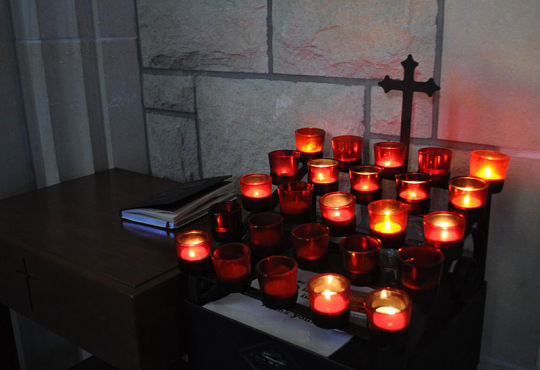
An offering to a folk saint might include the same votive candles and ex-votos (tributes of thanks) left at the shrines to canonized saints, but they also frequently include other items that reflect something of the spirit's former life or personality.
Now on to the saints themselves:

Some of the Folk Saints in the Folk Catholicism of the Americas:
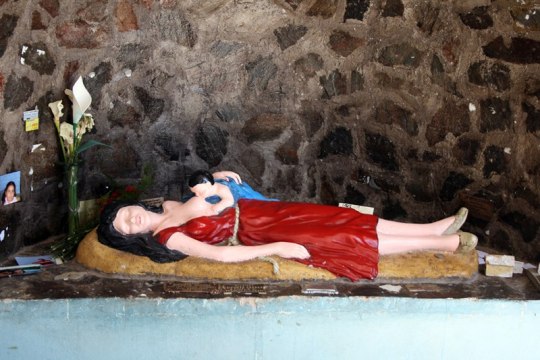
La Difunta Correa is a figure in Argentinian folk-religion. Every year since 1840, miracles are said to occur at the shrine. Her body was found by gauchos, astonished when they saw the dead woman's baby was alive, feeding from her "miraculously" ever-full breast.
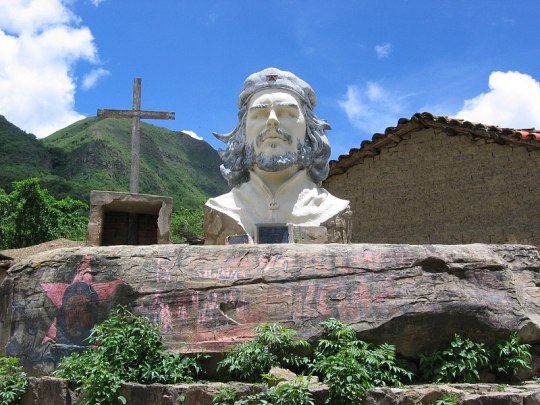
On October 8, 1967, the Argentine revolutionary Che Guevara was captured by the CIA-assisted Bolivian Army and killed, nowadays a monument to "El Che" exists in the town and images of the revolutionary are hung, and some pray to Santo Ernesto who is said to bring about miracles.
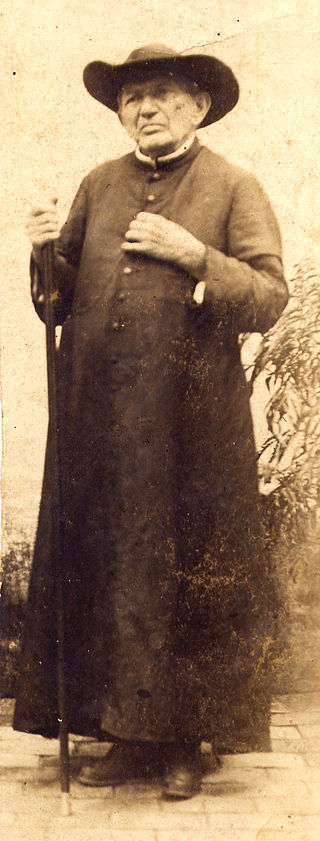
Padre Cícero was a Brazilian Catholic priest who became a spiritual leader to the people of Northeastern Brazil. In the course of his ministry, he was accused of heresy by the Church, eventually becoming suspended but not formally excommunicated. A statue of him now stands.

Santa Muerte is an idol, female deity or folk saint in Mexican folk Catholicism and paganism. A personification of death, she is associated with healing, protection, and safe delivery to the afterlife by her devotees. She is seen as a protector of outcasts, including LGBT people.

Gauchito Gil is a folk religious figure in Argentina's popular culture. One can spot small shrines of Gauchito Gil on roadsides throughout Argentina due to the red color and the flags, many of which read "Gracias, Gauchito Gil" if the person's request is fulfilled.
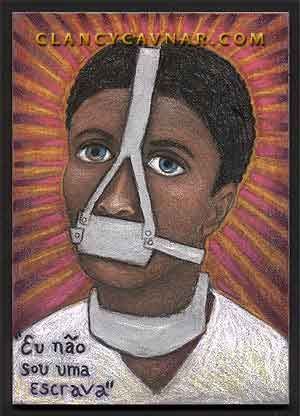
Escrava Anastacia is a popular saint venerated in Brazil. A Black slave woman, Anastacia is depicted as beautiful, having piercing eyes and wearing an oppressive facemask. Anastacia is a very important figure in Folk Catholic and Umbanda devotion, especially with Black Brazilians.
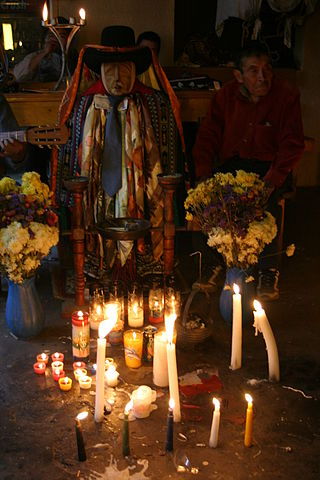
Maximón, also called San Simón, is a Mayan deity and folk saint represented in various forms by the Maya people of several towns in the highlands of Western Guatemala. Oral tradition of his in these communities is complex, diverse, and born of the Maya traditions centuries ago.
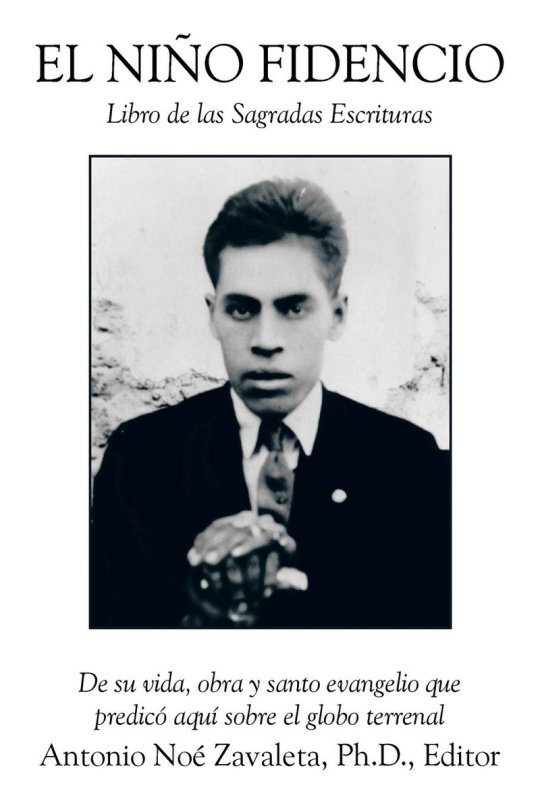
El Niño Fidencio was a Mexican curandero. Fidencio was famous for operations without anaesthesia without causing pain to patients, and provided cures related to specific parts of town, such as a pepper tree which the congregation threw offerings around. He is now seen as a saint.
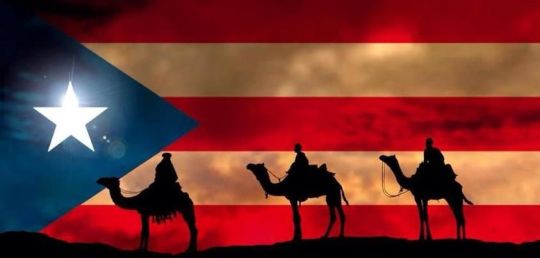
In Puerto Rico, Dia de Los Tres Reyes Magos, or Three Kings' Day is an important holiday. On the day before the feast (January 5), the "Rosario de Reyes" or "Promesa de Reyes" is traditionally celebrated with songs (aguinaldos) promised to be sung to the Kings.
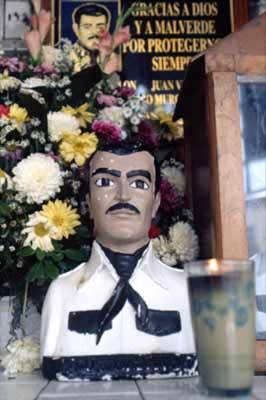
Jesús Malverde, known as the "angel of the poor", or the "narco-saint", is a folklore hero in the Mexican state of Sinaloa. He is a "Robin Hood figure" who was supposed to have stolen from the rich to give to the poor. He is celebrated as a folk saint, particularly among narcos.
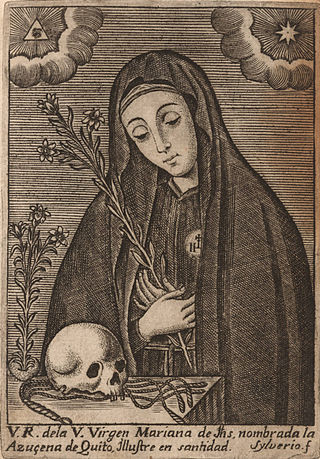
Mariana of Jesus de Paredes is a Catholic saint and was the first person to be canonized from what is now Ecuador. She was a recluse who is said to have sacrificed herself for the salvation of her city. She remains very popular with many of the people of Ecuador.

Miriam Alejandra Bianchi, known by her stage name Gilda, was an Argentinian cumbia singer and songwriter. On 7 September 1996 Gilda died in a tragic bus accident, and shortly after her death, Gilda was credited by her fans with achieving miracles and many even called her a saint.
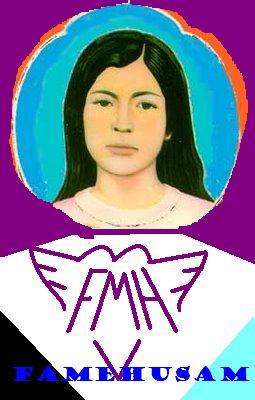
Sarita Colonia, or La Sarita, was a young Peruvian woman who was credited with the ability to make miracles. After her death, a popular veneration for her began, due to her reputation of holiness. She is not recognized by the Church, but is popular, especially with the poor.

Charlene Marie Richard was a twelve-year-old Catholic Cajun girl from Richard, Louisiana, USA. She has become the focus of a popular belief that she is a saint—a person who is in heaven—who has performed a number of miracles.

Selena Quintanilla-Pérez was a singer, songwriter, and fashion designer. Referred to as the "Queen of Tejano music", her contributions to music and fashion made her one of the most celebrated Mexican-American entertainers of the late 20th century. She has a strong following.
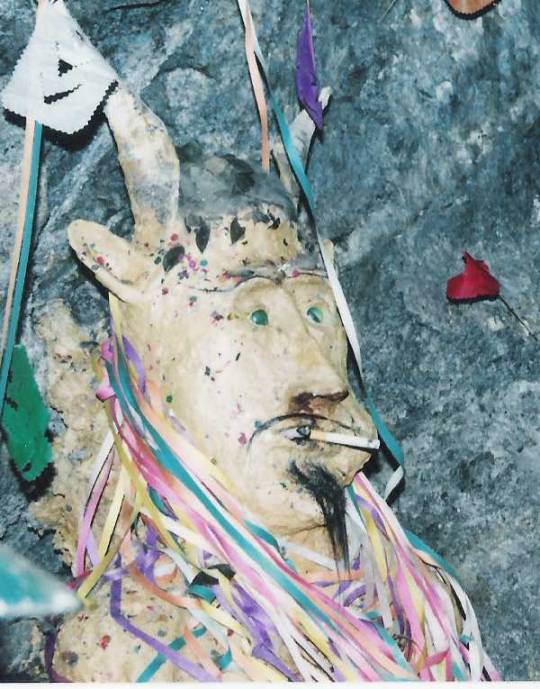
El Tío, is believed in Cerro Rico, Potosí, Bolivia to be the "Lord of the Underworld". There are many statues of this spirit in the mines of Cerro Rico. He rules over the mines, simultaneously offering protection and destruction. Miners bring offerings such as cigarettes.
Every year, the Carnaval de Oruro is held, and costumes and statues of El Tío are paraded around in a ceremony that represents his defeat at the hands of the Archangel Michael. This is the only time that images of El Tío are allowed above the surface of the mines.
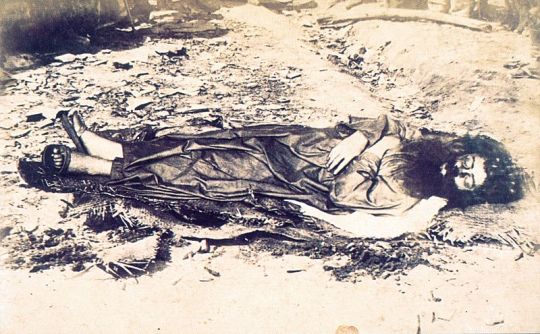
Antônio Conselheiro was a Brazilian religious leader, preacher, and founder of the village of Canudos, the scene of the War of Canudos (1896–1897), a civil rebellion against the central government. He was strongly against slavery, and had preached and written about it.
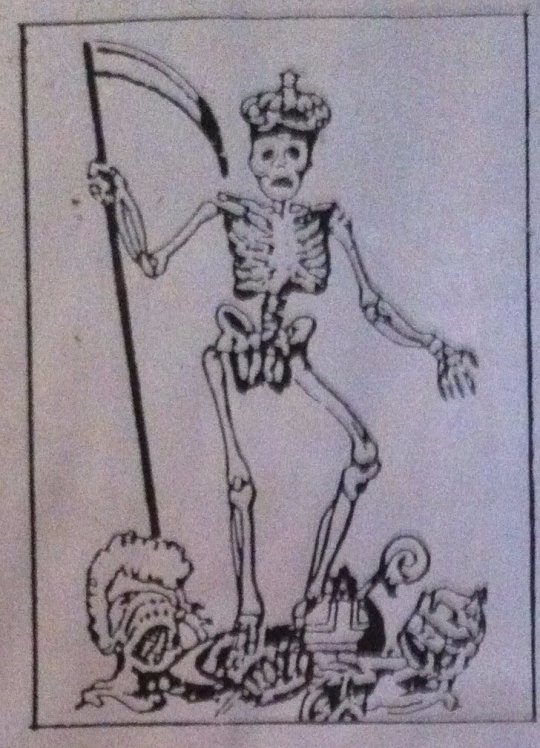
San Pascualito is a folk saint associated with Saint Paschal Baylon and venerated in Guatemala and the Mexican state of Chiapas. His veneration is associated with the curing of disease. San Pascualito is represented as a skeleton, sometimes caped or wearing a crown.
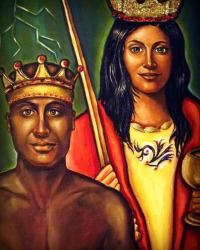
Santa Barbara is a major saint in the Catholic tradition of Cuba. In the Afro-Cuban religion of Santería she is often syncretized with Chango, the deity of fire, lightning, and thunder. Chango is male and represents male beauty, virility, passion and power.
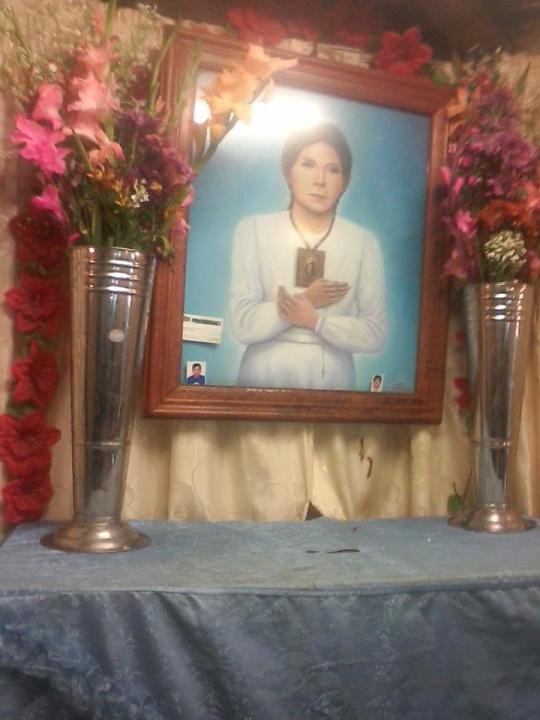
La Melchorita is a folk Catholic religious figure from Peru who devoted her entire life to caring for the poor and sick in the village that she lived in.

Don Pedro Jaramillo, was a Purépecha curandero, faith healer, and folk saint from the South Texas Valley region. He is known as "the healer of Los Olmos Creek" and "el mero jefe" of the curanderos. He believed he heard a voice telling him God had given him the power to heal.
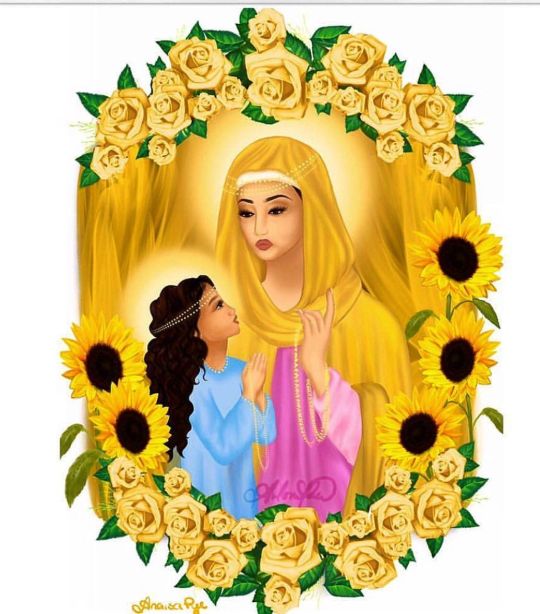
Anaisa Pye is a popular loa within religion in the Dominican Republic. She is considered the patron of love, money, and general happiness within Dominican Vudú and Folk Catholicism. Among Dominican Catholic believers, she is syncretized with Saint Anne.

San La Muerte is a skeletal folk saint that is venerated in Paraguay, Argentina, and southern Brazil. Saint Death is depicted as a male skeleton figure usually holding a scythe. Many devotees consider the veneration of San La Muerte as being part of their Catholic faith.
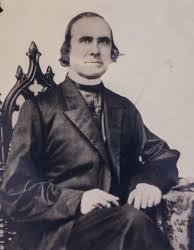
Father J.M. Villars was a Catholic Priest in Indiana. He died in mysterious circumstances in 1868. He has since become a folk saint. People began making pilgrimages to his grave in the early 1910s.

Saint Óscar Romero (1917 – 1980) was a prelate of the Catholic Church in El Salvador who served as the Archbishop of San Salvador. He spoke out against poverty, social injustice and paid great attention to the poor & marginalized. He was recently canonized.

In Managua, Nicaragua, there is a procession for Saint Dominic. An old, small statuette that personifies this saint which has been considered responsible for miracles involving many families and successive generations. Minguito is the name of the statuette, short for 'Domingo'.

The Virgen de los Angeles is the patron saint of Costa Rica. She is also known as La Negrita, the Black Virgin, as she is a Black/Afro-Latina representation. She is a small (less than a meter tall), statuette found on August 2, 1635 by an Indigenous woman.

Santa Teresa was a Mexican mystic, folk healer, and revolutionary insurgent. She had a serious illness and began to experience religious visions. Teresa Urrea was venerated as a folk saint among the many Indigenous people of the Sonoran Desert near the United States border.
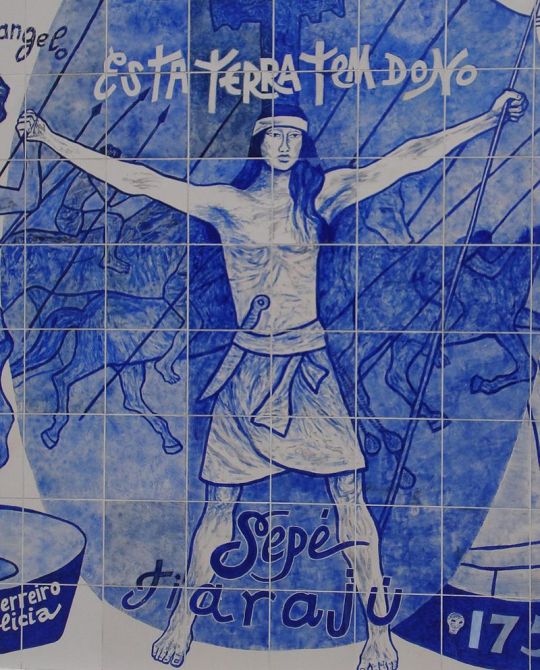
Sepé Tiaraju was an Indigenous Guarani leader in the Jesuit reduction mission of São Luiz Gonzaga and who died on February 7, 1756, in the state of Rio Grande do Sul, Brazil. He led the fight against the Portuguese and Spanish colonial powers, and considered a saint by some.
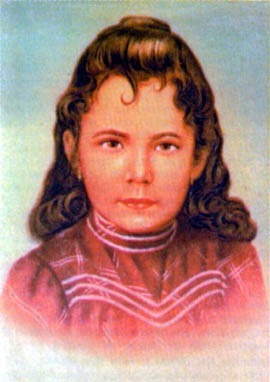
Menina Izildinha, Angel of the Lord or Saint Izildinha is the popular name of Maria Izilda de Castro Ribeiro, an unofficial popular folk saint to whom Brazilian Catholics have attributed inexplicable miracles, cures and healings. She is a patron saint of the poor.
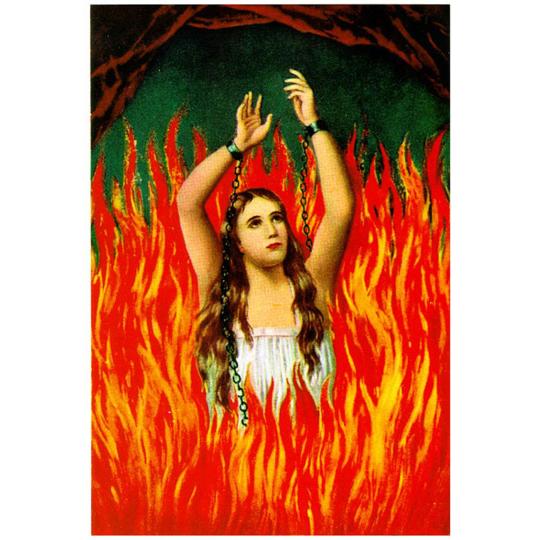
Popular in the traditions of Santeria, Haitian Vodou, Louisiana Voodoo, Dominican Vudu, and Folk Catholicism, the Anima Sola is an image depicting a soul in purgatory, popular in Spanish-speaking Latin America, Haiti, Southwestern USA, Louisiana, Southern Florida, Andalucia, the Canary Islands, and Southern Italy.
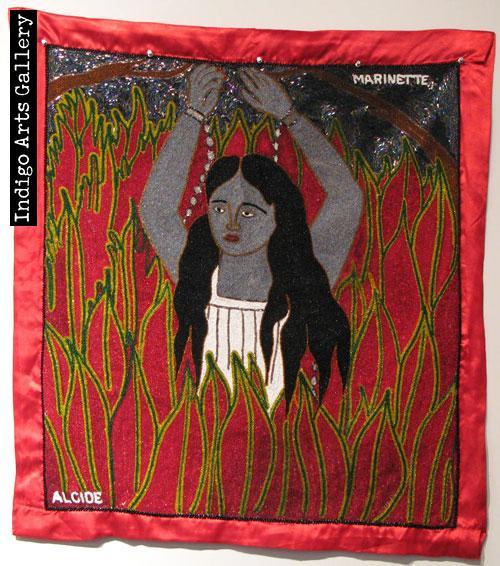
Her Haitian Vodou counterpart is Marinette, a loa of power and violence. She is represented by a screech owl and is often seen as the protector of werewolves (lougarou). Her colors are black and deep blood red. Her offerings are black pigs and black roosters plucked alive.
In Santería or Lukumi, the Afro-Caribbean religion of Cuba, there is a syncretization of the Anima Sola with the Eshu Alleguana/Alawana. Anima Sola is grouped in a triad in some traditions with The Intranquil Spirit and the Dominant Spirit.

Marie Catherine Laveau was a Louisiana Creole practitioner of Voodoo, herbalist and midwife who was renowned in New Orleans. Her daughter, Marie Laveau II, also practiced rootwork, conjure, African spiritualism as well as Louisiana Voodoo. She is considered a saint by some.
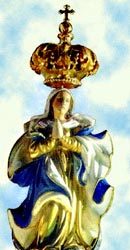
Nuestra Señora de los Treinta y Tres, also known as the Liberator of Uruguay, is a title of the Virgin Mary and the Patroness of Uruguay. Ever since the country's independence, there have been pilgrimages to her shrine, for instance, in times of pests, plague, or strife.
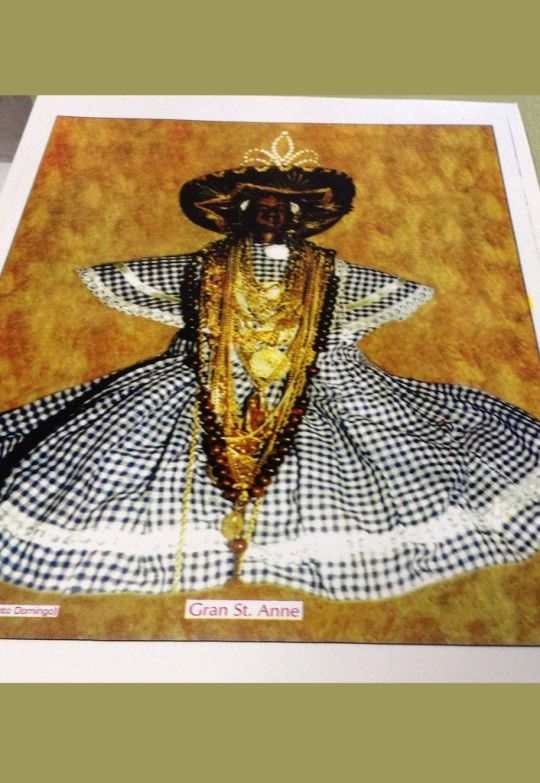
In July, hundreds of pilgrims will make their way to an isolated town in the northwest of Haiti, called Anse-à-Foleur or Ansafolè. The journey celebrates a Black Saint known as Gran'n Sainte Anne Charitable in her Catholic form and Ti Saint Anne in Vodou form.
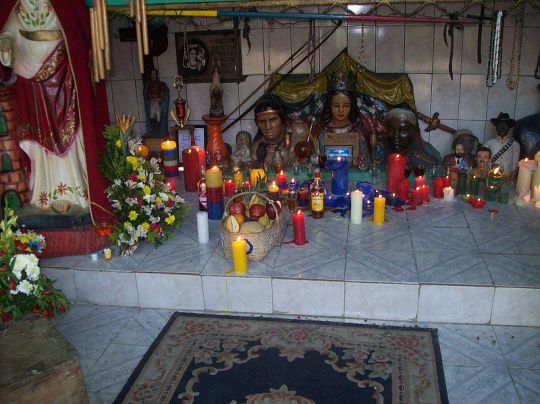
María Lionza is the central figure in one of the most widespread Indigenous beliefs in Venezuela. The cult of María Lionza is a blend of African, Indigenous and Catholic beliefs. She is revered as a goddess of nature, love, peace, & harmony. She has followers throughout Venezuela
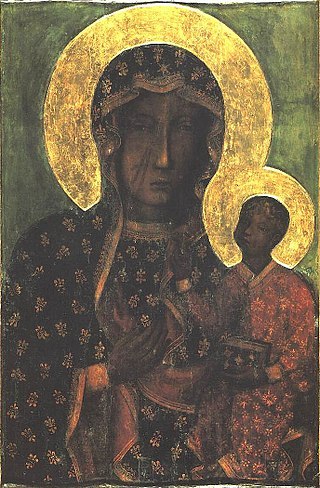
Ezilí Dantor or Erzulie Dantó is the main loa or senior spirit of the Petro family in Haitian Vodou. She became popular among single mothers during the 1980s/90s in Haiti and Dominican Republic. The syncretic version of this loa is associated with the Black Madonna of Częstochowa.
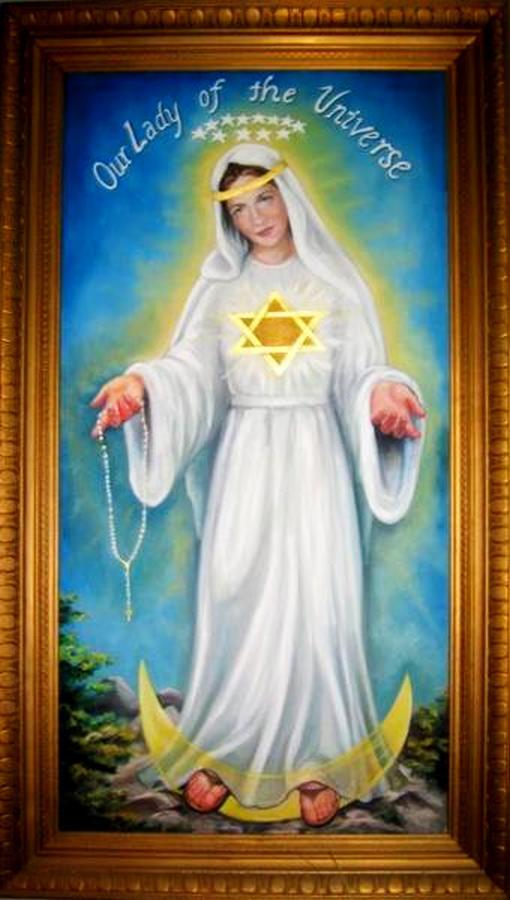
In 1945, at 7 pm, 9-year-old Joseph Vitolo was one of a group of children playing outside his home near The Bronx's Grand Concourse in New York City. The children saw something floating above a hill, and when Joseph recited a Hail Mary he saw a woman whom he identified as the Virgin Mary.
Within a few days, the visitations were receiving worldwide attention and up to 20,000 people attended the nightly vigil. Among those who expressed interest in the events were Frank Sinatra, Lou Costello, and Francis Cardinal Spellman.
Revered as a saint by the pilgrims, Joseph was frequently asked to cure the sick and injured and would respond by praying with them. The place where Joseph allegedly saw the visions was bought by a devotee who created a shrine there.
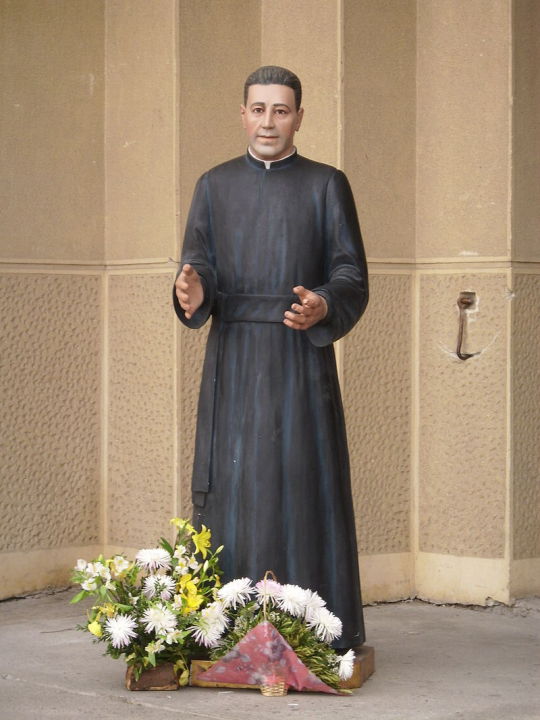
Saint Alberto Hurtado, popularly known in Chile as Padre Hurtado, was a Chilean Jesuit priest, lawyer, social worker, and writer. He is a patron saint of poor people, street children, and social workers. He fought hard for the labor movement in the country.
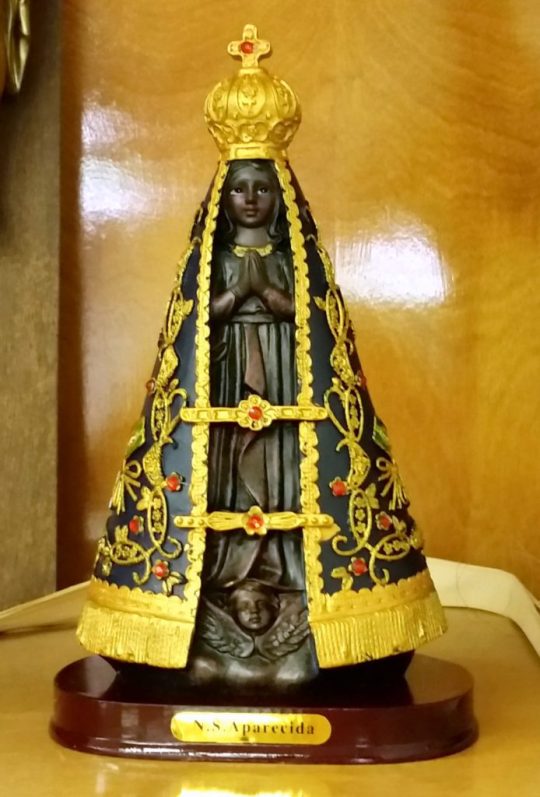
Our Lady Aparecida is widely venerated by Brazilian Catholics, who consider her as the patroness of Brazil. Accounts state that the statue was originally found by three fishermen who miraculously caught many fish after invoking the Blessed Virgin Mary.
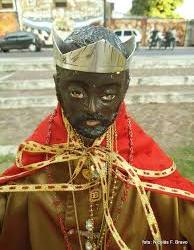
San Baltasar or King Baltasar Cambá is a folk saint of African origin, widely venerated in the coastal area of Argentina in the province of Corrientes. The worship of San Baltasar is known as the Brotherhood of San Baltazar, since the Catholic Church has not canonized him.

La Mano Poderosa is Spanish for "The Powerful Hand," the pierced hand of Our Lord Jesus Christ which is often seen in Latin American iconography, especially in Puerto Rico and Mexico. They are sold on prayer candles and there are prayers one can say.
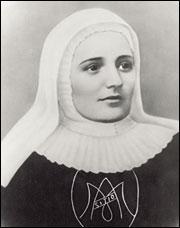
Saint Laura Montoya was a Colombian Catholic religious sister and the founder of the Congregation of the Missionary Sisters of the Immaculate Virgin Mary and Saint Catherine of Siena. She was well known for her work for acting as a strong role model for South American girls.
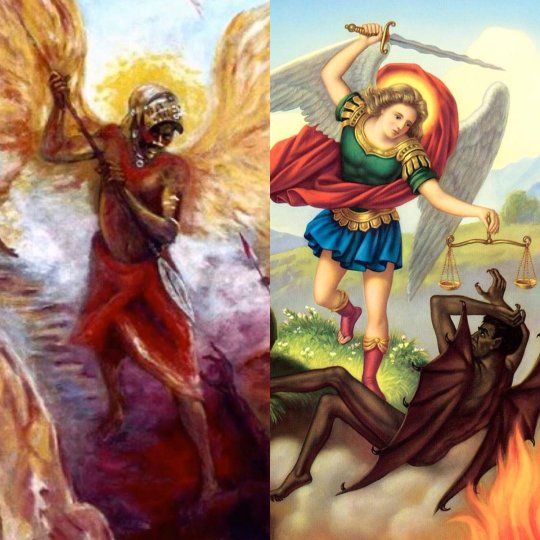
Belie Belcan is a very popular loa within 21 Divisiones (Dominican Vudú). He is considered the patron saint of justice who defends people against evil. He is considered very polite, understanding, and protective. In Catholicism, he is syncretized with San Miguel Arcangel.

Elegua is an Orisha, a deity of roads in the religions of Santería, Umbanda, Quimbanda, and Candomblé. In folk Catholicism, he is syncretized with Saint Michael, Saint Anthony of Padua, or the Holy Child of Atocha.
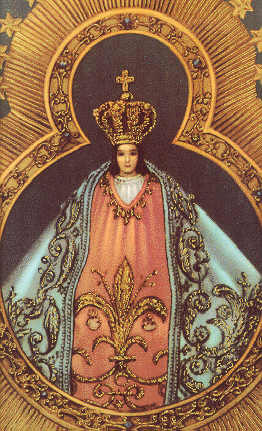
Nuestra Señora de Suyapa is a title of the Virgin Mary, mother of Jesus Christ. An 18th-century cedar wood statue of the Virgin is perhaps Honduras' most popular religious image, and the focus of an extensive pilgrimage. The statue is considered to have miraculous powers.

The lluvia de peces (lit. 'rain of fish') is a phenomenon that has been occurring yearly for more than a century in Yoro, Honduras, in which fish fall from the sky. Spanish priest Father José Manuel de Jesús Subirana is associated with this phenomenon.
The legend goes as follows: "Father Subirana saw how poor the people of Honduras were and prayed three days and three nights asking God for a miracle to help the poor people and to provide them with food...
...After these three days and nights, God took note of this and there came a dark cloud. Many tasty fish fell from the sky, feeding all the people. Since then this wonder is repeated every year."
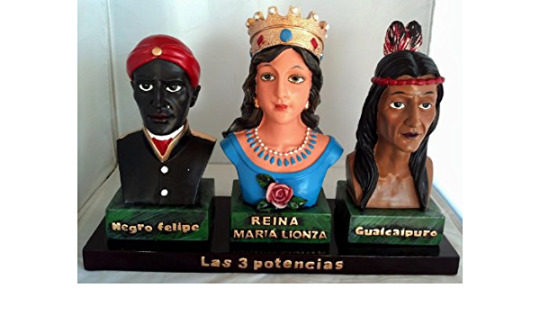
Negro Felipe was an escaped slave from Cuba who played a prominent role in the struggle for independence. He served as Bolivar’s aide before being murdered by Spanish colonists in Venezuela. Now a beloved spirit of Maria Lionza, he is venerated as one of the Très Potencias.
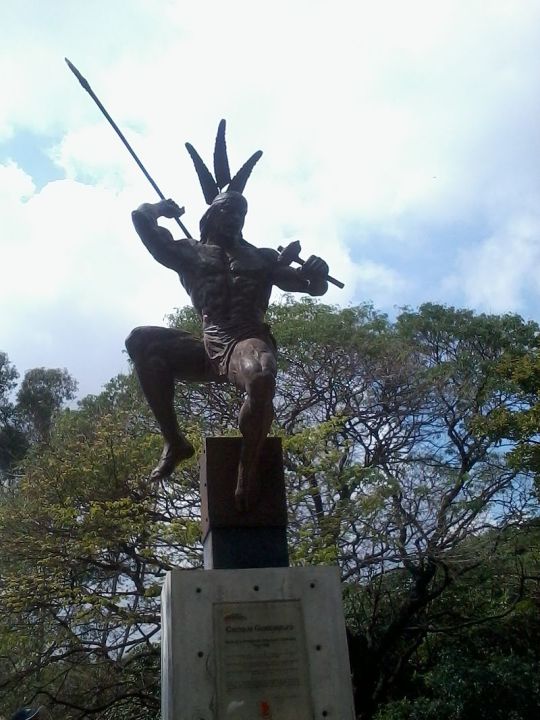
Guaicaipuro is a legendary Indigenous Venezuelan chief of both the Teques and Caracas tribes. He is now among the most important spirits of the Venezuelan spiritual tradition, Maria Lionza.

Ricardo Espiell Barrionuevo known as “Ricardito” was born in Lima in 1886. He died when he was seven of unknown causes. Legend says that his relatives made a statue in his name after his death. A big earthquake destroyed part of the cemetery and the statue disappeared.
Nobody could find the statue. Strangely after some months the statue appeared in Spain and it was intact. The president of that moment ordered to bring back it again. Now the statue is considered miraculous by many.
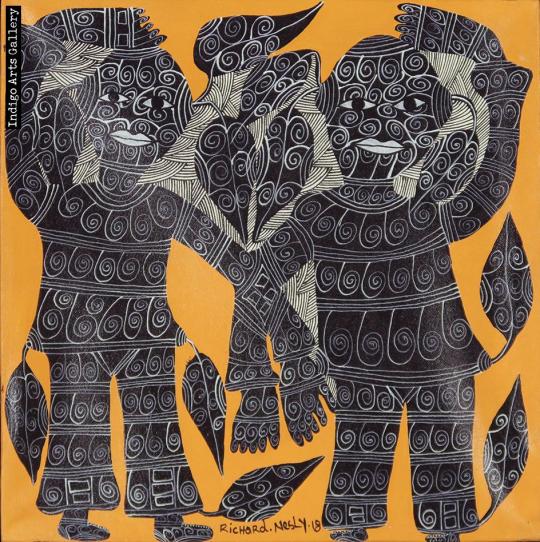
Marassa Jumeaux are the divine twins in Vodou. Love, truth and justice. Directed by reason. Mysteries of liaison between earth and heaven and they personify astronomic-astrological learning. In folk Catholicism they are syncretised with the Catholic Saints Cosmas and Damian.

In Panama , in the Villa de los Santos, there is a legend of the appearance of a headless Catholic Padre who is supposed to be the soul of a missionary who arrived with the Spanish conquerors and who was beheaded on the Cerro de Juan Díaz .

José Gregorio Hernández was a Venezuelan physician. Born in Isnotú, Trujillo State, he became a highly renowned doctor, more so after his death. After his death, people around the country started claiming to have been granted miracles after praying for his intercession to God.

For centuries, Puerto Rican santeros have carved sculptures of saints from fallen trees. They stand watch even where there are no churches. They are carefully crafted and painted. Tthe most common figures are the Three Kings, Santa Barbara, San Francisco, and La Mano Poderosa.

Papa Legba is a loa in Haitian Vodou, who serves as the intermediary between the loa and humanity. He stands at a spiritual crossroads and gives (or denies) permission to speak with the spirits. Legba is syncretized with Saint Peter, Saint Lazarus, and Saint Anthony.
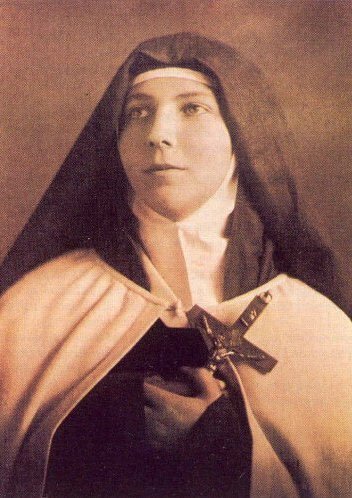
Santa Teresa of Jesus of Los Andes was a Chilean professed religious from the Discalced Carmelites. Her time in the convent was cut short due to her contracting an aggressive disease that killed her. She remains popular with some Catholics in Chile.

The Fiesta Virgen del Mar is a boat festival takes place every year in Puntarenas, Costa Rica to remember the major & damaging storm of 1920, and to give thanks to the Patron Saint of Puntarenas, la Virgen del Carmen, who was said to have saved a fishing vessel during the storm.

Miguel Ángel Gaitán, or El Angelito Milagroso, was an Argentine baby who died of meningitis, 15 days before his first birthday. His corpse remained very well preserved, as was discovered after a violent rainstorm in 1973, revered in Argentina, people go to his shrine for miracles
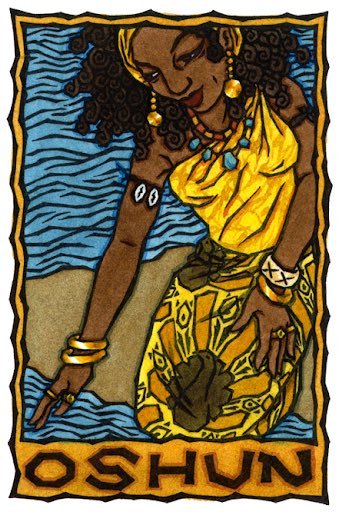
Ọṣun is an Orisha, a spirit, a deity, or a goddess in Yoruba-based religion. She is an important deity Ochún is usually equated with Cuba's patron saint, Our Lady of Charity. In Brazilian Candomblé, the orisha Oxum has been conflated with Our Lady of the Immaculate Conception
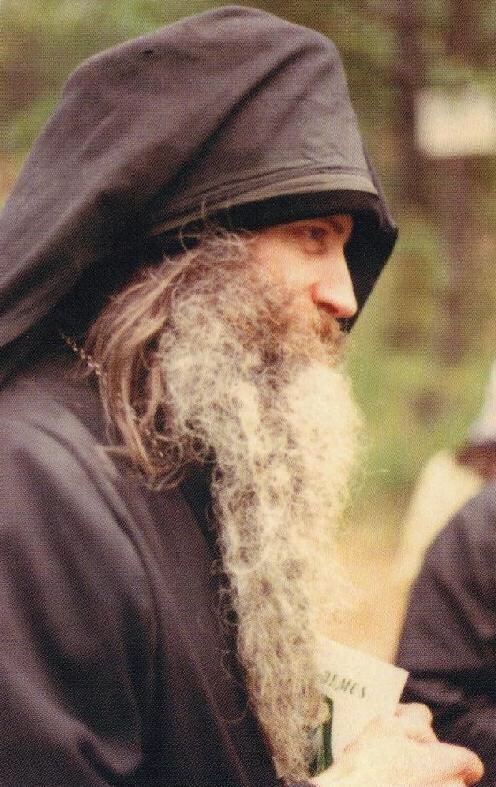
Seraphim Rose, was an American hieromonk of the Russian Orthodox Church Outside Russia who co-founded the St. Herman of Alaska Monastery in Platina, California. Some folk Orthodox Christians hold him in high esteem, venerating him in iconography, liturgy and prayer.

The veneration of San Judas Tadeo in Mexico is very popular. The saint is officially associated with difficult circumstances and is the Patron of Lost Causes, with the idea that the saint hears the petitions of both the good and the bad. It has spread throughout Latin America.

Mariano de Jesús Euse Hoyos was a Colombian Roman Catholic priest ordained in 1872 for the Diocese of Santa Rosa de Osos. He worked in his parish as a staunch defender of the poor and of rural laborers - he himself came from rural origins - and now has many popular devotions.
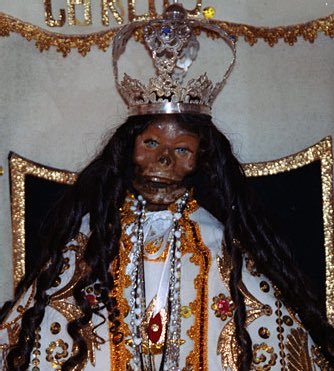
El Niño Compadrito is a relatively obscure folk saint with that is famous for his blue eyes from Cusco, Peru. He is a mummified corpse, and his veneration is a result of syncretic Indigenous and Catholic beliefs.

A late twentieth century movement to gain national recognition of Afro-Peruvian cultural contributions in Cañete Province focused on Santa Efigenia. An annual celebration of Santa Efígenia is held on September 21 each year in Peru, with processions made in homage to her.

It is popular to give tribute to the virgin and martyr Santa Librada, patron saint of Las Tablas, better known as "La Moñona" in Panama and Argentina.
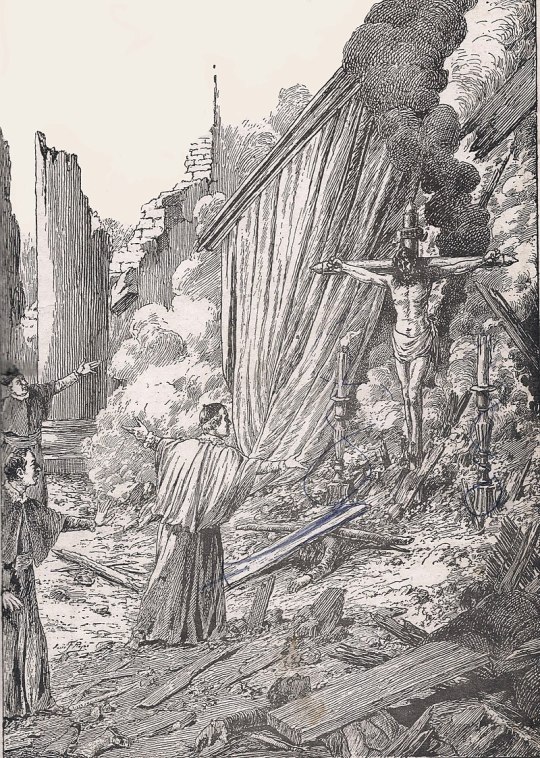
In traditional and popular folklore of Chile, the procession of the Cristo de Mayo is also called 'Señor de los Temblores', which means Lord of the Earthquakes. This procession is done to protect the inhabitants of Santiago from future earthquakes and calamities.
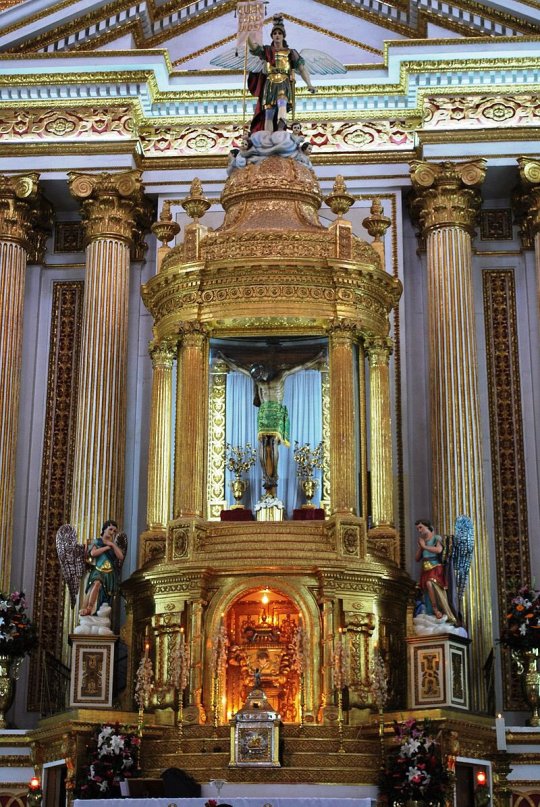
The Sanctuary of Chalma, is an important pilgrimage site in Mexico. The sanctuary is dedicated to an image of what many people describe as a "Black Christ" on a cross that legend says miraculously appeared in a cave where the worship of a deity known as Tezcatlipoca took place.
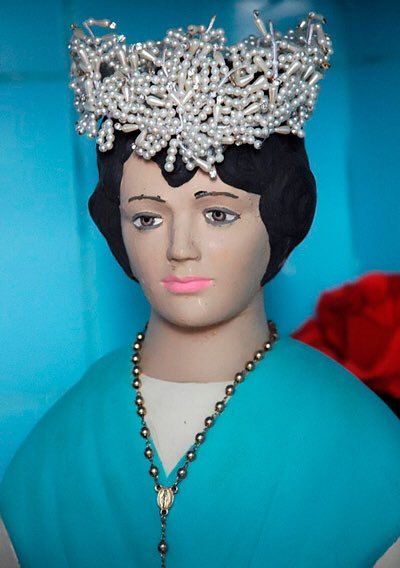
Maria da Conceição Bueno is considered a "popular saint" in the State of Paraná, Brazil. She was brutally murdered by a soldier. It is said that at the place of her death a wooden cross was placed, becoming a place of prayers where devotees claimed to have their requests granted.

Azaka (Kouzin or Couzen) is the loa of the harvest in Haitian Vodou. Azaka is often identified with Saint Isadore.
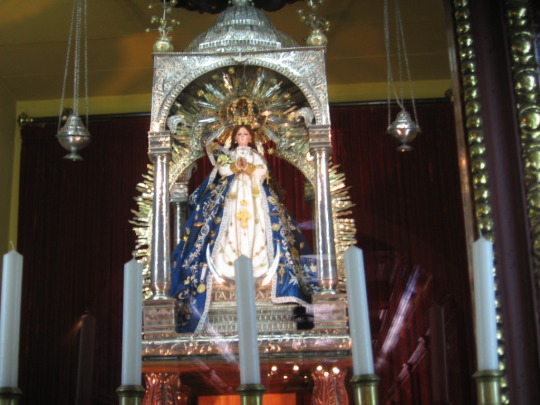
"La Purísima is a festival to the Virgin Mary that is celebrated between November 28 and December 8. The 7th is the culmination, with "La Gritería." It is the most popular festival of the year for most Nicaraguans.

Francisco Pancho Sierra was an Argentine curandero. He is one of the many folklore characters of the rural culture of the Pampean provinces of Argentina. He supposedly helped many people, and is considered a Saint by some.
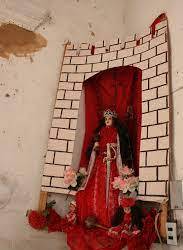
Trinidad Orisha, also known as Shango, is a syncretic religion in Trinidad and Tobago and is of Caribbean origin, originally from West Africa (Yoruba religion). Obatala/Saint Benedict and Shango/Saint John are some of the syncretic saints/spirits in the religion.

The Virgen de la Bala is a folk devotion to an icon of the Virgin Mary that is said to protect people against violence. It has gained some popularity in Mexico.

Monumento al Divino Salvador del Mundo is a monument located on Plaza El Salvador del Mundo in San Salvador City, El Salvador. It consists of a statue of Jesus Christ standing on top of a global sphere of planet Earth, placed on top of the tall four-sided concrete base pedestal.

Rosita de Pachacútec is a folk devotion to a young Peruvian girl thought to be a saint.
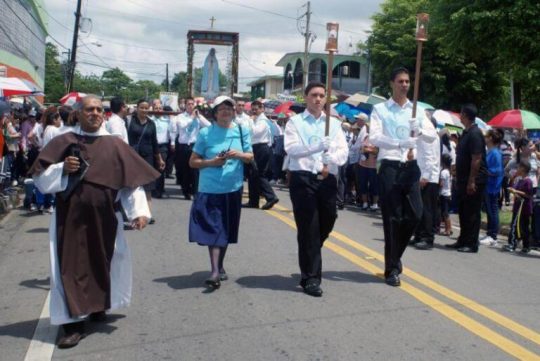
"La Virgen del Pozo" is a supposed Marian apparition at a spring-puddle in Sabana Grande, Puerto Rico in 1953. Several students from a nearby school reported seeing "a beautiful young lady" floating on a cloud above a spring that provided water to the school
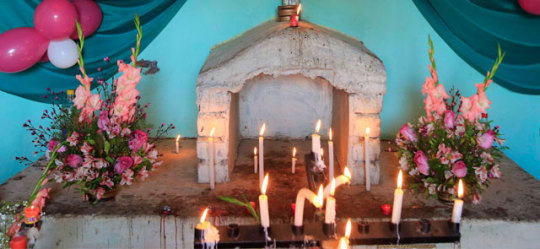
La Quemadita, or Casimira Morón, was brought to a small town in Peru on foot, because she had suffered an accident, burning her entire body. The inhabitants of the area leave her candles and pray for her soul, becoming a folk saint in the town, with people praying at the shrine.

San Miguel Arcángel is not a folk saint, but a saint and an angel that is recognized by the Church. Regarded as one of the most important saints in Latin America, he is known as defeating Satan in the War in Heaven. His likeness is used in many occult practices in the region.
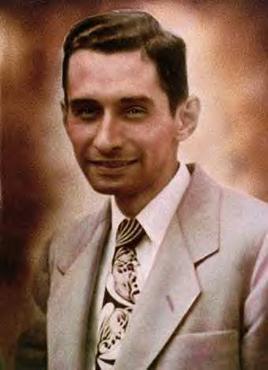
Carlos Manuel Cecilio Rodríguez Santiago, or Beato Charlie, was a layperson of the Catholic Church, who was beatified on April 29, 2001. He is the first Puerto Rican, the first Caribbean-born layperson in history to be beatified. There is a movement to make him an offical saint.
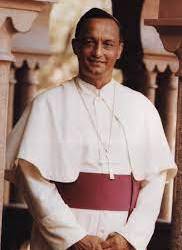
Often called “The Peoples’ Priest,” Trinidadian Archbishop Anthony Pantin was loved by many for his compassion and the work he did for the poor and underprivileged. He might become the next Caribbean Saint.
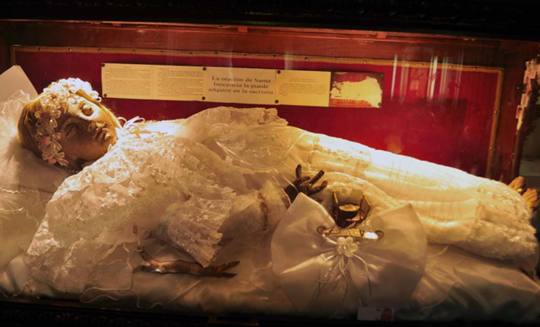
In Guadalajara, Mexico there is an ancient child mummy called "Santa Inocencia". There are many versions to her story, but all focus on the elements that she was a girl who was said to have been killed by her father due to her desire to convert to Christianity.
Her remains were brought to Mexico from Europe during the colonial era. Recently, a tourist was standing in front of the corpse when he caught a chilling moment on video. The corpse is said to blink sometimes, and many say that the cathedral is haunted.
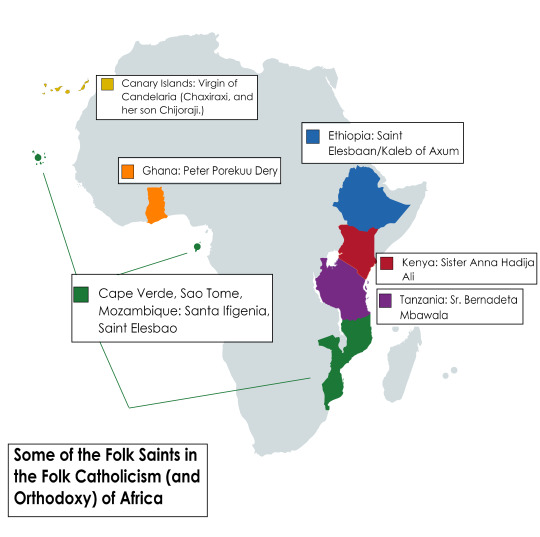
Some of the Folk Saints in the Folk Catholicism (and Orthodoxy) of Africa:

Sister Anna Hadija Ali was a Kenyan Religious Sister. She is known for her claims of personal contact with Jesus Christ in visitations between 1987-1991. For 4 years she experienced weekly visits from Him; and cried bloody tears on Wednesday-Thursday nights according to witnesses
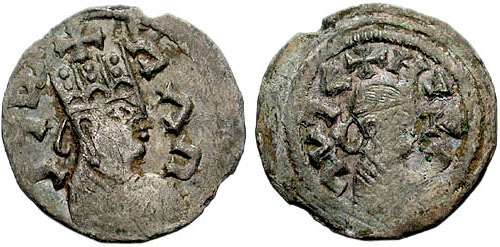
Kaleb (520), also known as Saint Elesbaan, is perhaps the best-documented, if not best-known, King of Aksum, which was situated in modern-day Eritrea and Tigray, Ethiopia.
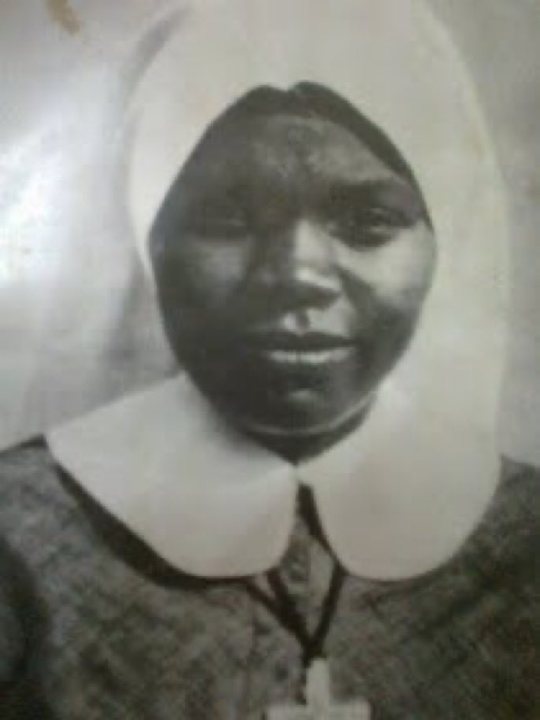
Sr. Bernadeta Mbawala, from Tanzania, was noticed to have special grace, love, obidience, humility and perseverance in life, and when she died in 1950 people began to visist her grave and pray there. People report to have been helped by God through the intercession with her.
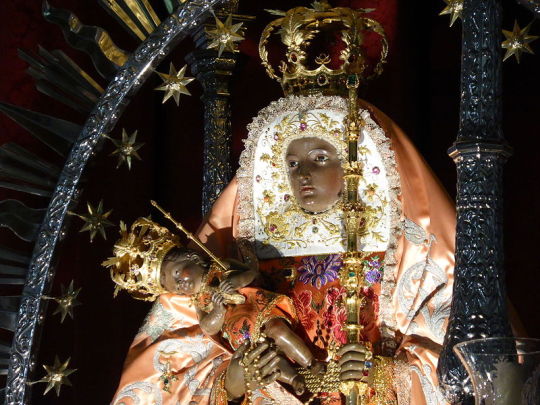
The Virgin of Candelaria or Our Lady of Candle, popularly called La Morenita, celebrates the Virgin Mary on the island of Tenerife, one of the Canary Islands. She is depicted as a Black Madonna. In Guanche mythology, the she was identified as Chaxiraxi, and her son Chijoraji.
The cult of the Virgin of Candelaria swept America due to the emigration from the Canary Islands. She is widely venerated in South America and the Caribbean. In Cuban Santería, the she is identified with Oyá as well as Oba. In Brazilian Candomblé, the she is identified with Oshun.
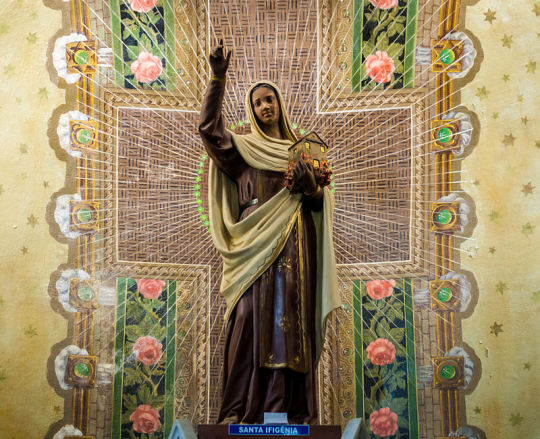
Saint Efigenia/Ifigênia of Ethiopia is a folk saint, especially popular with Afro-Peruvians, Afro-Brazilians, and Cubans.
A "Venerable Brotherhood of Saint Elesbão & Saint Efigênia" was founded in Rio de Janeiro on 1740 by free Black people from Cabo Verde, Coast of the Mine (present-day Ghana), São Tomé Island, and Mozambique.
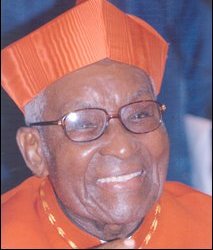
Peter Porekuu (1918 –2008) – given the surname Der then Dery– was a Ghanaian Roman Catholic cardinal. Some have suggested that he could be a saint.

Some of the Folk Saints in the Folk Catholicism of Asia:

Francis Xavier Truong Buu Diep was a Vietnamese Catholic priest who served the people of Bạc Liêu. According to believers, after he passed, his remains were lost until he appeared in a vision and disclosed the location and at least two posthumous miracles are attributed to him.
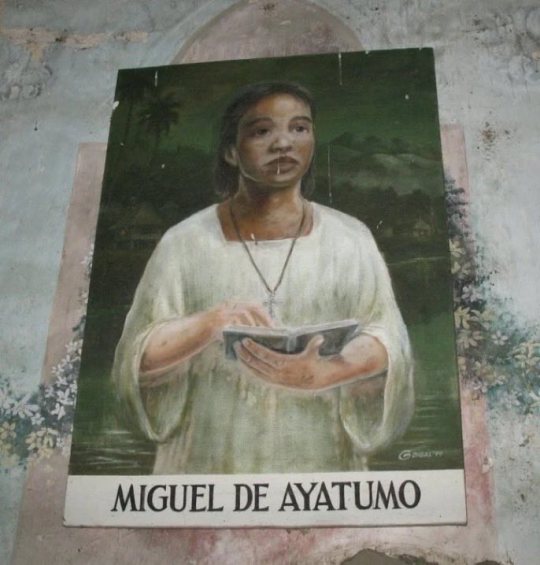
Miguel Ayatumo is a venerated Filipino Catholic seminarian student in Loboc, Bohol, who died in odor of sanctity. Contemporary records speaks glowingly of him and his remains lies inside the Loboc Church and is being revered as a pilgrimage site by some.
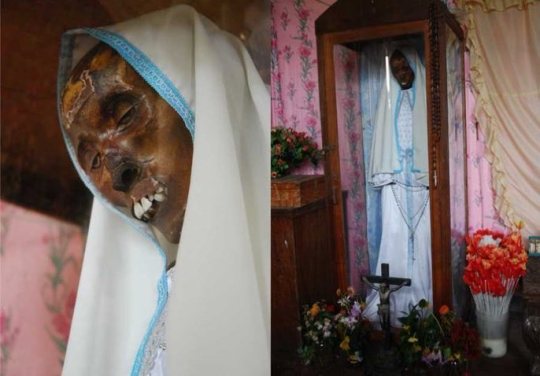
Maria Basañes was a very religious Filipina woman. When she passed, the family was required to move the grave and found that her body was preserved. They now keep her in the living room of their home. Rumours say she wanders the region at night, and could be deemed a saint.
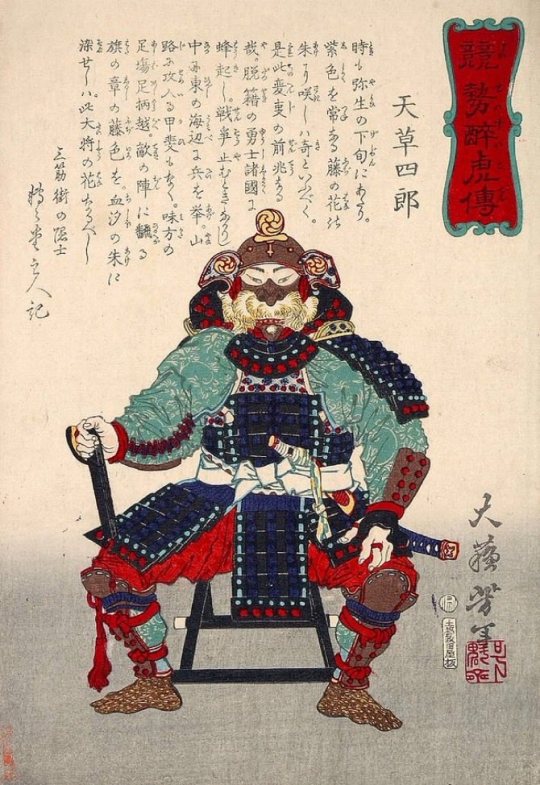
Amakusa Shirō led the Shimabara Rebellion, an uprising of Japanese Catholics against the Shogunate. They were defeated, and Shirō was executed at the age of 17. His head was displayed on a pike near Nagasaki. He is now considered a folk saint to many Japanese Catholics.

Filomena Almarinez was a Filipina woman who gained her fame as a folk saint after her body was discovered in a state of Incorruptibility when her grave was exhumed for her father's body. Locals proclaimed her a saint and a number of miracles were attributed to her.

Some of the Folk Saints in the Folk Catholicism (and Orthodoxy) of Europe:

Dr José Tomás de Sousa Martins was a doctor renowned for his work for the poor in Lisbon, Portugal. After his death, a spiritist cult arose around his personality in which he is thanked for "miraculous" cures. Followers say that they have psychic communications with him.

According to Catholic tradition, Saint Amaro was an abbot and sailor who it was claimed sailed across the Atlantic Ocean to an earthly paradise.
Many claim that the historical character of San Amaro converged many pagan traditions present in Asturias and Galicia.
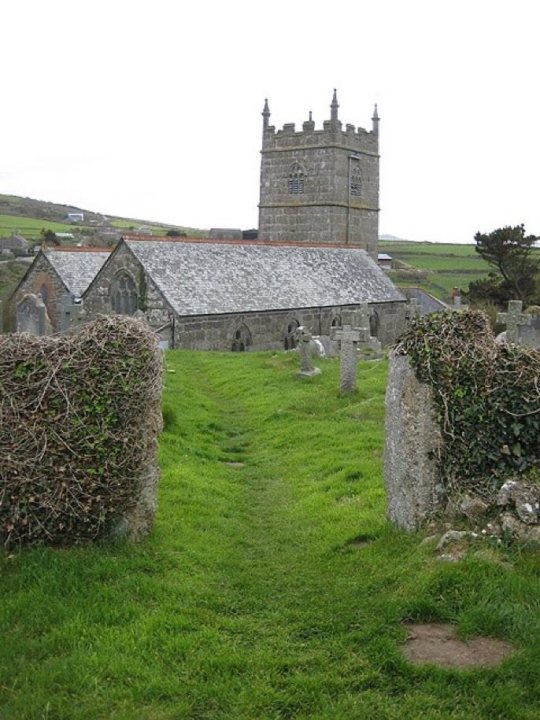
Saint Senara is a legendary Cornish folk saint with links to the village of Zennor on the coast of Cornwall , UK. The Church of Saint Senara, Zennor is dedicated to her. Senara was highly venerated by local fishermen. Her legend is similar to the story of Danaë in Greek Myth.
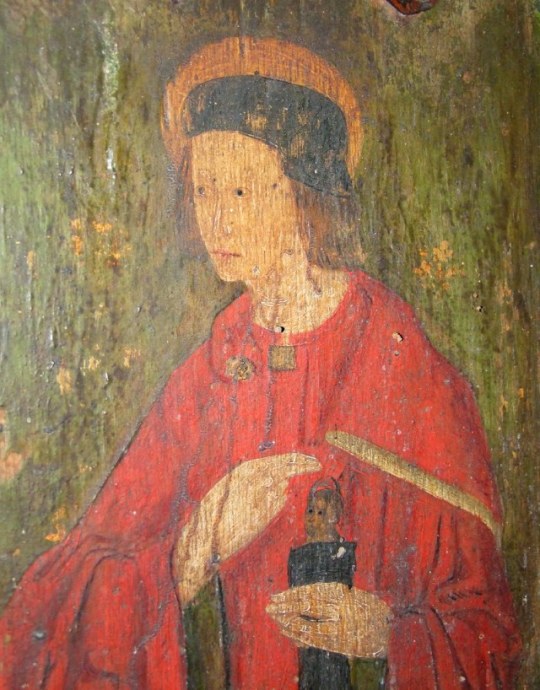
Sir John Schorne was rector of North Marston in the English county of Buckinghamshire. He was a very pious man and was said to have effected many miraculous cures for gout and toothache. His shrine became a popular place of pilgrimage and he was regarded by many as a folk saint.

Saint Guinefort was a 13th-century French dog that received local veneration as a folk saint after miracles were reported at his grave. Guinefort became recognised by locals as a saint for the protection of infants after he was martyred protecting a baby.
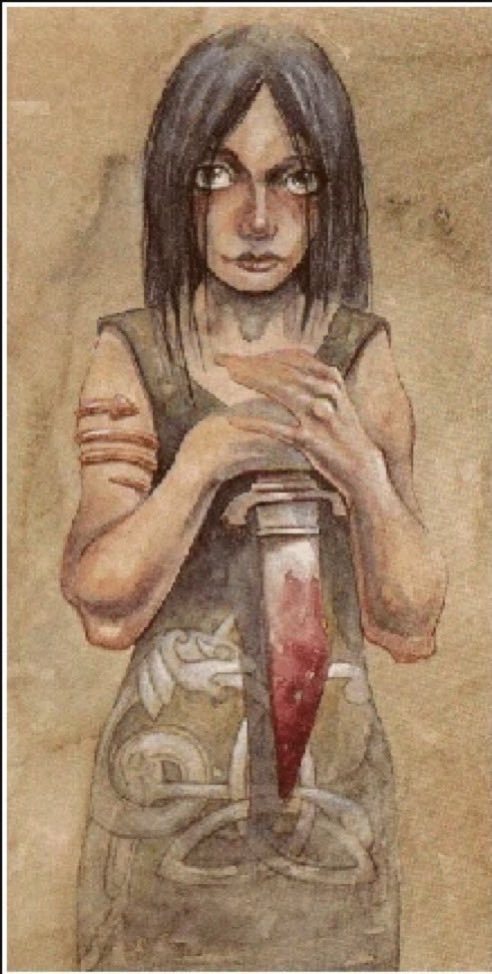
María Cuchilla is said to be a condemned spirit of a young woman of a humble class who lived in Oviedo, Spain in the 18th or 19th century. She is bloodthirsty and appears at night brandishing a huge bloody knife. Some people consider her the Patron Saint of unsolved crimes.
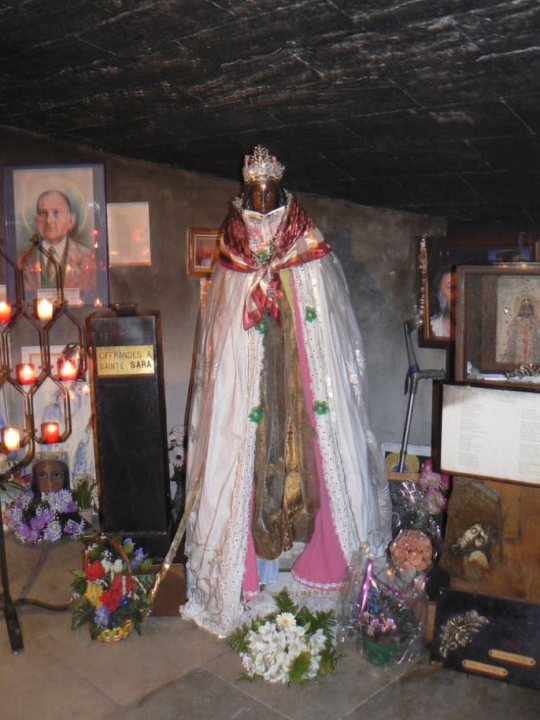
Saint Sarah is the patron saint of the Romani people. The center of her veneration is Saintes-Maries-de-la-Mer, a place of pilgrimage for Roma in France. Legend identifies her as the attendant of one of the Three Marys, with whom she is supposed to have arrived in the Camargue.

Nikolay Guryanov was a Russian Orthodox Christian and reputed myrrh-bearing starets and priest. Numerous miracles and healings are ascribed to him. He is considered a saint in some folk Orthodoxy.

In certain parts of Andalusia, a legend is known that tells that the Anima Sola, was in ancient times the daughter of a nobleman, the young girl helped the poor, her father did not like the idea of her daughter doing that & as punishment he ordered her to be burned at the stake.
Belief in Anima Sola is perhaps strongest in Naples, Italy, where it is referred to as "the cult of the souls in Purgatory."
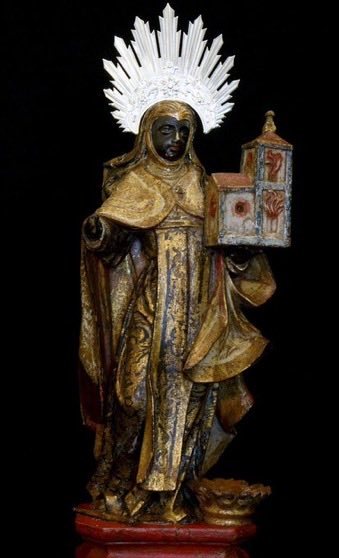
In Cádiz, Black Spaniards organized their own religious association, "Confradia de Nuestra Senora de le Salud, San Bello y Santa Ifigênia", formed in El Puerto de Santa María in 1575, a devotion for Santa Ifigênia. From Cádiz, her devotion spread to Portugal and then to Brazil.

Hélèna Soutadé is a "popular saint" (not recognized by the Church) in Toulouse, France. The cult of Saint Helena takes the form of pilgrimages to her tomb and contact with her relic (a piece of clothing). She was a teacher in life, and is called to help in such matters.
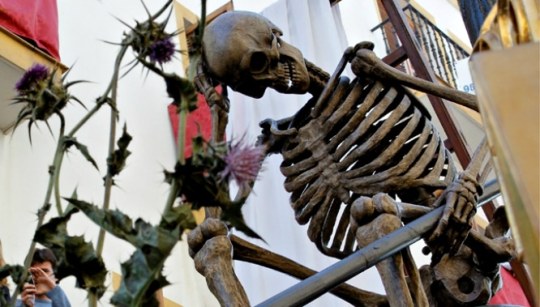
La Muerte or La Parca is Death in Spanish folklore. Their skeletal figure is commonly seen in several parts of Spain, such as in the Holy Week (Semana Santa) in Sevilla, Andalucia.
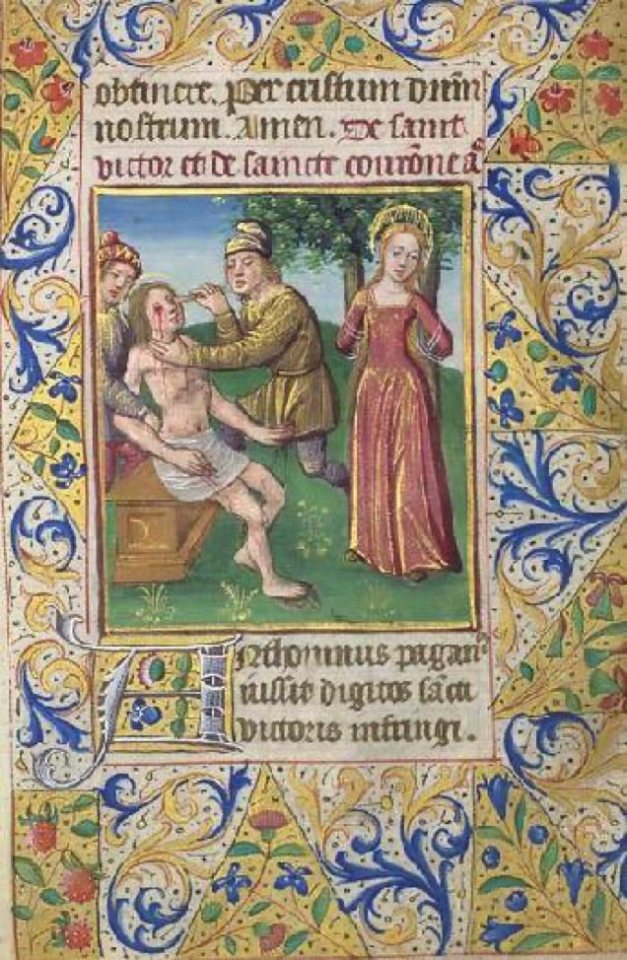
Saints Victor and Corona are two Christian martyrs. Victor was a Roman soldier who was tortured and killed; Corona was killed for comforting him. Corona is venerated in connection with treasure-hunting and, since 2020, with the 2020 coronavirus pandemic, especially in Italy.

Sebastianism is a Portuguese messianic myth, based on the belief that King Sebastian of Portugal, disappeared in the battle of Alcácer Quibir, will return from Morocco to save Portugal. It is categorised as an example of the King asleep in mountain folk motif.
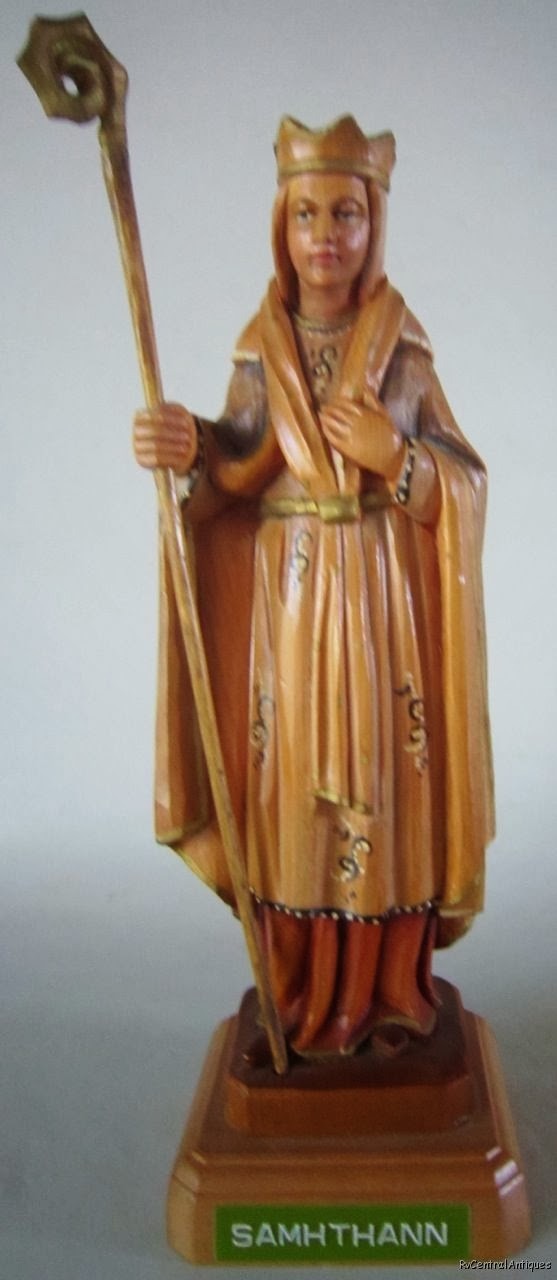
Samthann is an Irish folk saint, purportedly a Christian nun and abbess in Early Christian Ireland.
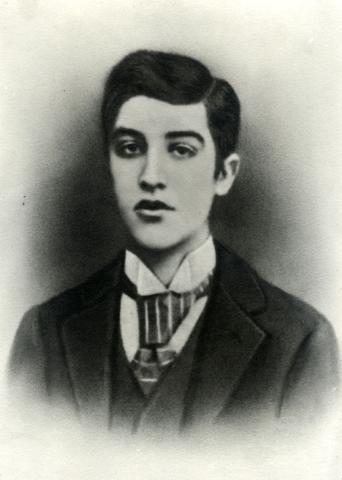
Francesc Canals i Ambrós, known as "el Santet" was a young man from Barcelona who died at the age of 22. Buried in the Poblenou Cemetery in Barcelona, he has a popular veneration that is attributed to the supposed granting of favors. In life he was a person loved by neighbors.
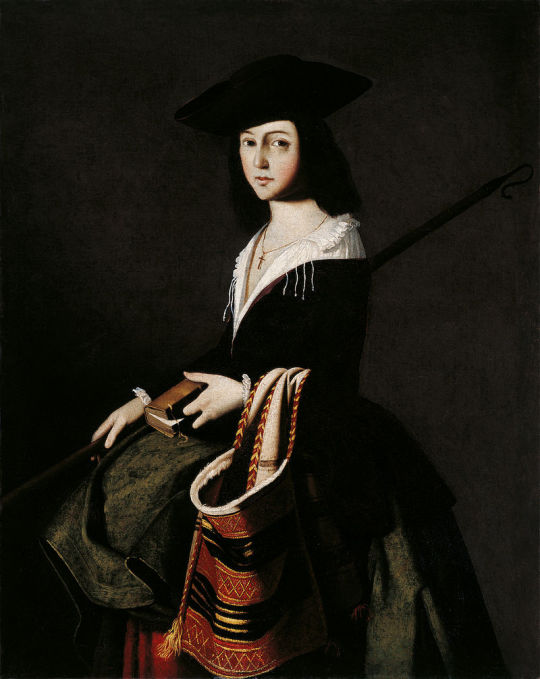
Saint Mariña of Aguas Santas (Mariña of Ourense) (119–139 AD) is a virgin martyr associated with the town of Aguas Santas, in the province of Ourense. She is venerated as one of nine sisters, including Quiteria and Liberata (Santa Librada).

Saint Quiteria was a second-century virgin martyr about whom nothing is certain except her name and her cult. She appears in the Roman Martyrology. She is said to have been born in Bracara (now Braga, Portugal), and her statue had many miracles attributed to it.
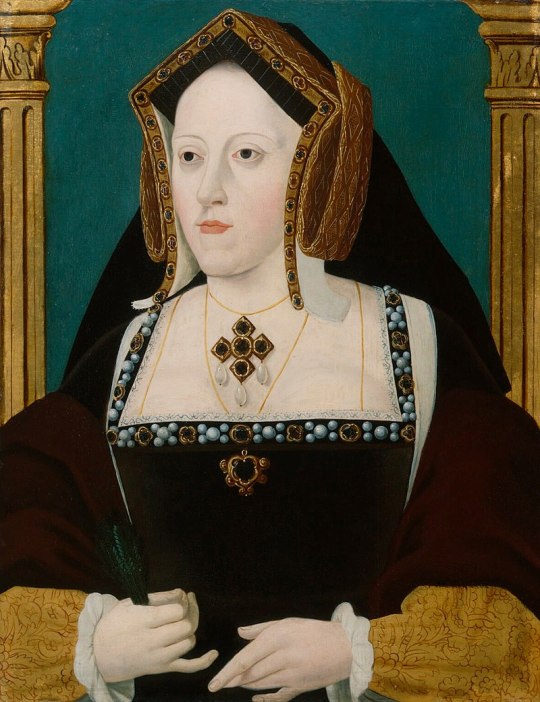
Catherine of Aragon (Spanish: Catalina) was Queen of England from June 1509 until May 1533 as the first wife of King Henry VIII. She was the daughter of the Catholic Monarchs Isabella I of Castile and Ferdinand II of Aragon. She has a major following amongst some Catholics.
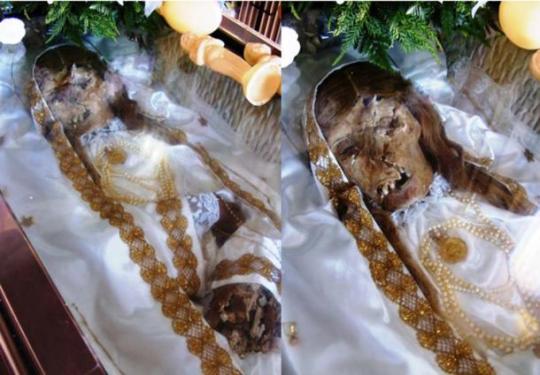
Maria Adelaide was a Portuguese woman who lived and died during the 19th century. Although not officially recognized by the Catholic Church, she is popularly considered to be one by the people of Portugal. When her body was exhumed that a cult began to grow around her.

Christina the Astonishing was a Christian holy woman born in Brustem, Belgium. She was considered a saint in her own time, and for centuries following her death. Prayers are traditionally said to Christina to seek her intercession for those suffering from mental illness.

Maria da Conceição Stinger Pimentel Teixeira, best known as Saozinha of Sheltered, was a young Catholic pious girl who died with a reputation for holiness and has a popular devotion as folk saint in the village of Alenquer, in Portugal.

A Marian apparition is a reported supernatural appearance by Mary, the mother of Jesus, or a series of related such appearances over a period of time. They are quite common throughout the Catholic world.
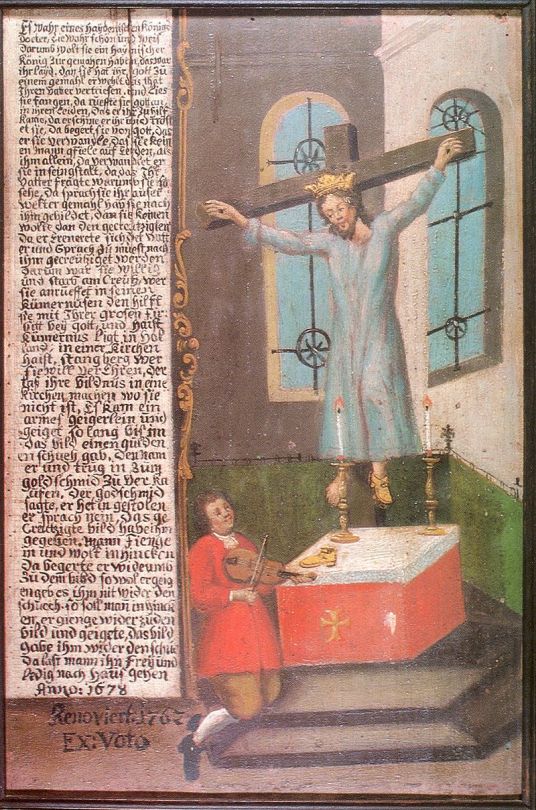
Wilgefortis is a female saint of the Catholic Church whose legend arose in the 14th century, and whose distinguishing feature is a large beard. Her name comes from the Latin "virgo fortis".
She is known as Uncumber in England, Debarras in France, and Liberata in Italy.
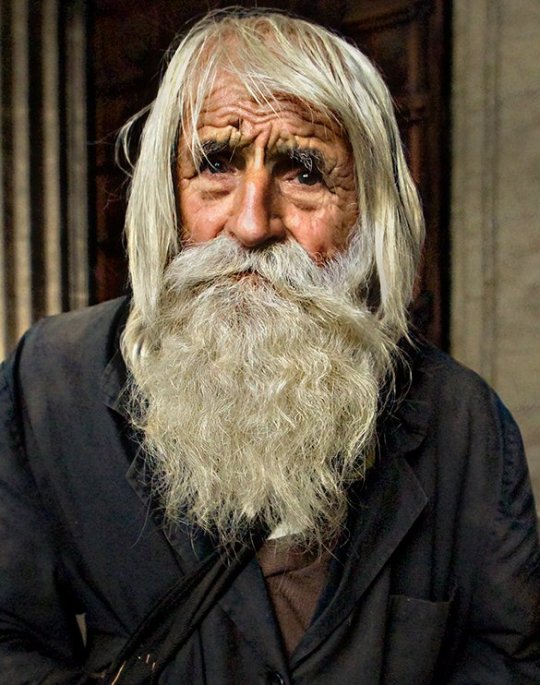
Dobri Dimitrov Dobrev, better known as Grandpa Dobri, Elder Dobri, or The Saint of Bailovo, was a Bulgarian ascetic who walked over 20 kilometres (12 mi) each day to sit or stand in front of the Cathedral of Alexander Nevsky in Sofia to collect money for charitable causes.
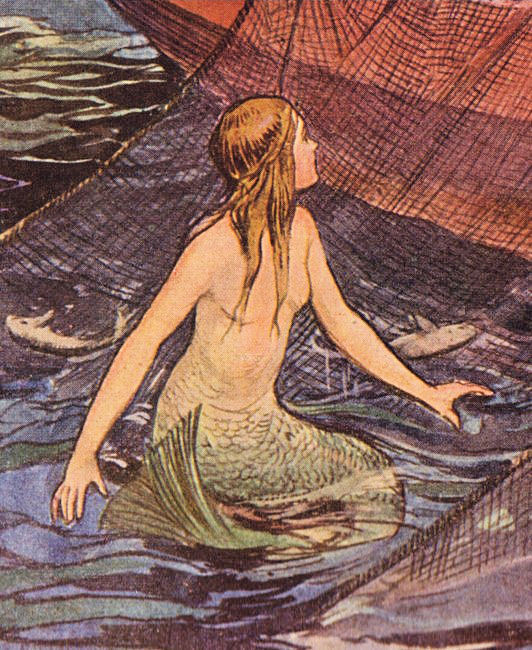
Saint Lí Ban was an Irish woman turned mermaid. She survived a flood, after which she was transformed into a being who was half-human, half-salmon. She was spotted by a ship carrying a messenger sent by St. Comgall to Rome. She was baptised, and given the Christian name Muirgein
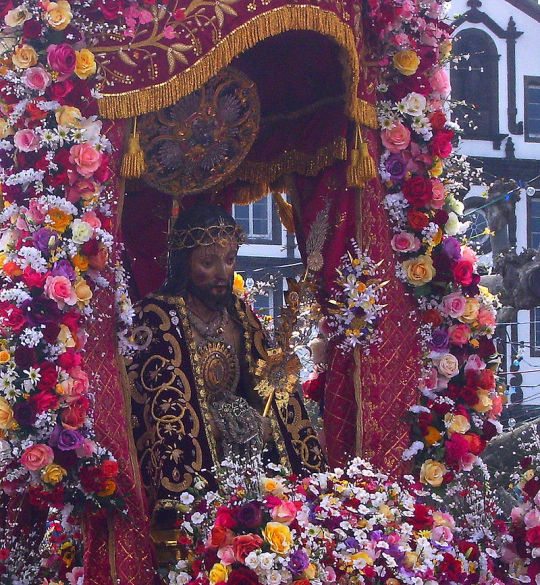
The Cult of the Lord Holy Christ of the Miracles is a religious veneration from the Azores Islands of Portugal that is associated with a wooden image of Jesus Christ. Originally from the island of São Miguel, the belief has spread throughout the world with the Azorean diaspora.
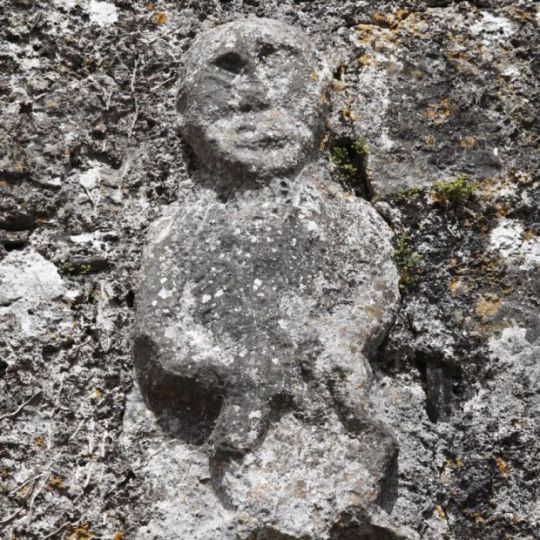
Traditionally, Sheelah's Day was celebrated the day after the Feast of St. Patrick and coincided with the Christian festivities. According to Irish folklore, Sheelah was either the wife of St. Patrick, and the holiday served to commemorate her life.

Thank you all for reading! I hope you enjoyed. Do you have a favorite folk saint?
#map#maps#thread#world#americas#latin america#europe#asia#africa#saints#folk saints#folk saint#saint#christianity#christian#catholic#catholicism#folk catholic#folk catholicism#horror#scary#folklore#urban legend#urban legends#cryptid#cryptozoology#religion#mexico#brazil#puerto rico
546 notes
·
View notes
Photo

El rey Aegon IV Targaryen, apodado el Indigno, fue el hijo mayor del rey Viserys II Targaryen y Lady Larra Rogare. Tuvo dos hermanos, Aemon y Naerys, con quien se casó. Fue Rey de los Siete Reinos entre 172 y 184 d.C. y es recordado como uno de los peores reyes de la historia. Fue padre de muchos bastardos, legitimando a varios de ellos antes de morir.
De acuerdo a fuentes semi-canónicas, Aegon comenzó su reinado siendo atractivo, vigoroso, robusto y joven pero lo terminó viejo y corrupto. Para el final de su reinado, era un hombre obeso y enfermo. Sus ojos casi no se veían de lo gorda que estaba su cara y sus piernas eran muy débiles para soportar su peso. Tenía una boca pequeña y una barba que se dejaba para intentar cubrir su papada prominente.
Hizo forjar una nueva corona, grande y pesada, de oro rojo, con cabezas de dragones, cada uno de los cuales tenía gemas en los ojos.
Creció durante el gobierno de su tío, el rey Aegon III Targaryen. En 153 d.C., Viserys casó a Aegon con su hermana, la princesa Naerys Targaryen, con la bendición del rey. Sin embargo, el matrimonio fue infeliz; Naerys tenía una mejor relación con su otro hermano, el príncipe Aemon Targaryen, quien sabía cómo hacerla reír y la trataba bien, al contrario que Aegon. Ambos hermanos discutieron durante el festín nupcial y Naerys lloró durante el encamamiento. El primer hijo de Aegon y Naerys, el príncipe Daeron, nació el último día de 153 d.C..
Como joven príncipe, Aegon acompañó a su primo, el rey Daeron I Targaryen, en su Conquista de Dorne; su hermano, el príncipe Aemon, se había unido a la Guardia Real y les acompañó. Después de la Claudicación de Lanza del Sol, el rey le encargó escoltar a los rehenes dornienses de alta cuna a Desembarco del Rey. Aegon se fijó en una de las rehenes, Cassella Vaith, y la convirtió en su amante durante unos años.
Cuando Baelor el Santo se convirtió en rey después de la muerte de Daeron I en Dorne, disolvió su matrimonio con su hermana, Daena Targaryen, y la encarceló junto a sus hermanas en la Bóveda de las Doncellas. Eso no impidió que Daena escapara de su confinamiento en tres ocasiones, una vez con la ayuda de su primo Aegon. Durante el tiempo que escapó, Daena quedó embarazada y se negó a decir quién era el padre; dio a luz al hijo de Aegon, que ella llamó Daemon.
Daemon no fue el primero de los bastardos de Aegon. Aegon ya había reconocido múltiples hijos de dos de sus cuatro amantes y más niños seguirían naciendo, pero no en su matrimonio. Durante los siguientes años, Naerys tuvo varios embarazos difíciles. En 161 d.C. Naerys dio a luz a gemelos que murieron poco después del nacimiento. En el año 172 d.C. después de otro embarazo complicado, Naerys dio a luz a una hija llamada Daenerys. El hermano gemelo de Daenerys, sin embargo, nació muerto.
Finalmente, el rey Baelor I murió de hambre durante uno de sus piadosos ayunos, y Daena y sus hermanas fueron pasadas por alto en la sucesión. Viserys, el padre de Aegon, se convirtió en rey, pero sólo gobernó durante un año antes de fallecer. Así, en 172 d.C., el príncipe Aegon se convirtió en rey Aegon IV. Algunos historiadores sospechan que la muerte repentina de su padre no fue natural y que Aegon lo envenenó para acelerar su camino al Trono de Hierro.
Aegon IV es generalmente considerado uno de los peores reyes de la historia de Poniente, llegando a ser apodado "el Indigno" por sus conocidos excesos y desórdenes. El comportamiento del rey causó gran conflicto en la corte, especialmente con su hijo Daeron y el hermano de Aegon, Aemon, quien entonces era el Lord Comandante de la Guardia Real.
Aegon fue un gobernante decadente y corrupto que se entregaba a sus pasiones y caprichos en cada oportunidad que tenía. Al ser atractivo, era popular entre las mujeres tanto de alta como de baja cuna. Tuvo hasta nueve amantes y muchos bastardos. Supuestamente, tenía cualquier mujer que quisiera, siendo indiferente si estaba casada o no.[8] Se sugería que el lema personal de Aegon IV, en vez de "Fuego y Sangre", debía ser "Báñenla y llévenla a la cama".
Llenó su corte con hombres que sobre todo le lisonjeaban y divertían. Privaba a los hombres de su legítima herencia cuando deseaba sus riquezas y en una ocasión regaló un huevo de dragón a Lord Butterwell a cambio de acostarse con sus tres hijas.
El rey mantenía a su amante de turno en la corte abiertamente, para angustia de su esposa. La reina Naerys era la única mujer que Aegon no llevaba con placer en la cama; no la amaba por ser piadosa, amable y frágil, todo lo que Aegon IV odiaba. Según el Gran Maestre Alford, después del nacimiento del príncipe Daeron, advirtió a Aegon que un segundo embarazo podría matar a la reina. Después de darle un heredero, Naerys le rogó a Aegon que "vivieran desde entonces como hermano y hermana". Aegon se mofó, diciendo que "eso es lo que estaban haciendo" e insistió en que todavía debía cumplir con sus "deberes de esposa" para el resto de su vida.
El tratamiento que Aegon infligía a su hermana esposa provocaba tensiones con su hermano Aemon. El resentimiento de Aegon por su hermano menor, quien era famoso y célebre, era fácil de ver, probablemente porque Aemon era todo lo que Aegon no era. Cuando la reina Naerys fue acusada de adulterio y traición por Ser Morgil Hastwyck, el príncipe Aemon defendió el honor de su hermana en un juicio por combate y mató a Ser Morgil. Este acontecimiento se hizo famoso e inspiró muchas canciones, historias y fábulas para los bardos, dando renombre al príncipe Aemon para gran molestia del rey Aegon IV. Según los escritos del maestre Kaeth en Vidas de cuatro reyes, fue Aegon IV quien secretamente inició los rumores del adulterio de Naerys y utilizó a Morgil para instigar este cuento.
En 178 d.C. el rey Aegon atrapó a uno de sus caballeros de la Guardia Real, Ser Terrence Toyne, durmiendo con una de sus amantes, Lady Bethany Bracken. Aunque proclamaron su amor, Aegon los hizo ejecutar a ambos.[10] Terrence fue desmembrado pieza por pieza, mientras que Bethany se vio obligada a verlo antes de conocer su propia muerte. Esta acción condujo a un intento de asesinato contra el rey Aegon IV por los hermanos de Ser Terrence , quienes deseaban venganza. El príncipe Aemon, quien a pesar de sus conflictos y el odio hacia Aegon IV, sacrificó su propia vida para proteger al monarca. La esposa de Aegon, Naerys, murió de parto un año más tarde en 179 d.C., junto con el niño. Aegon IV no hizo mucho para honrar las memorias de sus hermanos. Después de la muerte de ambos, Aegon IV comenzó a hacer referencias apenas veladas a la supuesta ilegitimidad de su hijo Daeron.
Fuegoscuro, la espada de acero valyrio de Aegon I Targaryen, era portada tradicionalmente por los reyes Targaryen que lo sucedieron. Aegon IV, sin embargo, se la entregó a su bastardo Daemon a la edad de doce años, nombrándolo caballero y reconociéndolo como hijo. Aegon prometió a Daemon a la hija del arconte de Tyrosh en matrimonio, una muchacha llamada Rohanne, con la previsión futura de tomar la flota de Tyrosh y utilizarla en una posible reconquista de Dorne.
Al igual que muchos otros reyes Targaryen, Aegon estaba obsesionado con traer de vuelta a los dragones para afianzar el poder de su casa. En lugar de tratar de resucitar a los dragones muertos de sus antepasados, Aegon ordenó construir siete dragones de madera y de hierro, equipados con mecanismos que pudieran expulsar fuego valyrio, empleados para conquistar Dorne, contra la opinión de su hijo Daeron. Sin embargo, sus "dragones" pronto resultaron ineficaces, cuando uno de ellos se quemó y se llevó buena parte del Bosque Real. Aegon IV enseguida se cansó de esta iniciativa.
El reinado de Aegon el Indigno terminó en 184 d.C. con una muerte horrible, cuando alcanzó tal grado de obesidad que le impedía caminar. Llegó a tener el cuerpo tan hinchado que apenas podía incorporarse de su cama, con los miembros podridos. Los maestres dijeron que nunca habían visto nada parecido, por lo que decidieron darle la leche de amapola para que muriera en paz y sin dolor.
A punto de morir, Aegon legitimó a sus hijos bastardos y los puso en la línea sucesoria detrás de su hijo Daeron. Pocos años después de la muerte de Aegon, Daemon Fuegoscuro se rebeló contra su medio hermano e intentó hacerse con el trono. Fue derrotado, pero los Fuegoscuro continuaron causando problemas durante casi cien años.
Termino como se esperaba, gordo, feo, podrido y solo. Supuestamente habia amado a sus nueve amantes, pero alguien como Aegon IV no sabría lo que es el amor y mucho menos el amor paternal, no solo con Daeron si no con Aegor, Brynden y Daemon, quien probablemente no era su "privilegiado" y solo quería causarle problemas a Daeron.
King Aegon IV Targaryen, nicknamed the Unworthy, was the eldest son of King Viserys II Targaryen and Lady Larra Rogare. He had two brothers, Aemon and Naerys, whom he married. He was King of the Seven Kingdoms between 172 and 184 AD. and is remembered as one of the worst kings in history. He was the father of many bastards, legitimizing several of them before dying.
According to semi-canonical sources, Aegon began his reign attractive, vigorous, robust, and young but ended up old and corrupt. By the end of his reign, he was an obese and sick man. His eyes barely showed how fat his face was and his legs were too weak to support his weight. He had a small mouth and a beard that he grew to try to cover his prominent jowls.
He had a new crown forged, large and heavy, of red gold, with the heads of dragons, each of which had gems in their eyes.
He grew up during the rule of his uncle, King Aegon III Targaryen. In 153 AD, Viserys married Aegon to his sister, Princess Naerys Targaryen, with the king's blessing. However, the marriage was unhappy; Naerys had a better relationship with her other brother, Prince Aemon Targaryen, who knew how to make her laugh and treated her well, unlike Aegon. The two brothers argued during the wedding feast and Naerys cried during the bedding. The first son of Aegon and Naerys, Prince Daeron, was born on the last day of 153 AD.
As a young prince, Aegon accompanied his cousin, King Daeron I Targaryen, on their Conquest of Dorne; his brother, Prince Aemon, had joined the Royal Guard and accompanied them. After the Surrender of Spear of the Sun, the king commissioned him to escort the highborn Dornish hostages to King's Landing. Aegon noticed one of the hostages, Cassella Vaith, and made her his lover for a few years.
When Baelor the Saint became king after Daeron I's death in Dorne, he dissolved his marriage to his sister, Daena Targaryen, and imprisoned her alongside her sisters in the Maidens' Vault. That didn't stop Daena from escaping her confinement three times, once with the help of her cousin Aegon. During the time she escaped, Daena became pregnant and refused to say who the father was; gave birth to Aegon's son, whom she named Daemon.
Daemon was not the first of Aegon's bastards. Aegon had already recognized multiple children from two of his four lovers and more children would continue to be born, but not in his marriage. Over the next several years, Naerys had several difficult pregnancies. In 161 AD Naerys gave birth to twins who died shortly after birth. In 172 A.D. After another complicated pregnancy, Naerys gave birth to a daughter named Daenerys. Daenerys' twin brother, however, was stillborn.
Finally, King Baelor I starved to death during one of his pious fasts, and Daena and her sisters were bypassed in the succession. Viserys, Aegon's father, became king, but only ruled for a year before passing away. Thus, in 172 AD, Prince Aegon became King Aegon IV. Some historians suspect that his father's sudden death was unnatural and that Aegon poisoned him to hasten his way to the Iron Throne.
Aegon IV is generally considered one of the worst kings in the history of Westeros, coming to be nicknamed "the Unworthy" for his known excesses and disorders. The king's behavior caused great conflict at court, especially with his son Daeron and Aegon's brother Aemon, who was then the Lord Commander of the Kingsguard.
Aegon was a decadent and corrupt ruler who indulged in his passions and whims at every opportunity. Being attractive, he was popular with both tall and short-born women. He had up to nine lovers and many bastards. Supposedly, he had any woman he wanted, regardless of whether she was married or not. [8] It was suggested that Aegon IV's personal motto, instead of "Fire and Blood", should be "Bathe her and put her to bed."
She filled her court with men who above all flattered and amused her. He deprived men of their rightful inheritance when he desired their riches and once gifted Lord Butterwell a dragon egg in exchange for sleeping with his three daughters.
The king kept his mistress on duty at court openly, much to the anguish of his wife. Queen Naerys was the only woman Aegon did not take with pleasure in bed; He did not love her for being pious, kind, and fragile, all that Aegon IV hated. According to Grand Master Alford, after the birth of Prince Daeron, he warned Aegon that a second pregnancy could kill the queen. After giving him an heir, Naerys begged Aegon to "live as brother and sister ever since." Aegon scoffed, saying "that's what they were doing" and insisted that he still have to fulfill his "wife's duties" for the rest of his life.
Aegon's treatment of his sister wife caused tension with his brother Aemon. Aegon's resentment for his younger brother, who was famous and celebrated, was easy to see, probably because Aemon was everything Aegon was not. When Queen Naerys was accused of adultery and treason by Ser Morgil Hastwyck, Prince Aemon defended her sister's honor in a trial by combat and killed Ser Morgil. This event became famous and inspired many songs, stories and fables for the bards, making Prince Aemon famous to the great annoyance of King Aegon IV. According to Maester Kaeth's writings in Lives of Four Kings, it was Aegon IV who secretly started the rumors of Naerys's adultery and used Morgil to instigate this tale.
In 178 AD King Aegon caught one of his Knights of the Royal Guard, Ser Terrence Toyne, sleeping with one of his lovers, Lady Bethany Bracken. Although they proclaimed their love, Aegon had them both executed. [10] Terrence was dismembered piece by piece, while Bethany was forced to see him before knowing her own death. This action led to an assassination attempt against King Aegon IV by Ser Terrence's brothers, who desired revenge. Prince Aemon, who despite his conflicts and hatred for Aegon IV, sacrificed his own life to protect the monarch. Aegon's wife, Naerys, died in childbirth a year later in AD 179, along with the child. Aegon IV did not do much to honor the memories of his brothers. After both of them died, Aegon IV began to make thinly veiled references to the alleged illegitimacy of his son Daeron.
Darkfire, the Valyrian steel sword of Aegon I Targaryen, was traditionally carried by the Targaryen kings who succeeded him. Aegon IV, however, gave it to his bastard Daemon at the age of twelve, knighting him and acknowledging him as his son. Aegon promised Daemon the daughter of the Archon of Tyrosh in marriage, a girl named Rohanne, with the future foresight of taking the Tyrosh fleet and using it in a possible reconquest of Dorne.
Like many other Targaryen kings, Aegon was obsessed with bringing dragons back to secure the power of his house. Rather than trying to resurrect the dead dragons of his ancestors, Aegon ordered the construction of seven dragons of wood and iron, equipped with mechanisms that could expel Valyrian fire, used to conquer Dorne, against the opinion of his son Daeron. However, his "dragons" were soon rendered ineffective, when one of them burned down and took much of the Royal Forest. Aegon IV quickly got tired of this initiative.
The reign of Aegon the Unworthy ended in 184 AD. with a horrible death, when he became so obese that he could not walk. His body became so swollen that he could barely get up from his bed, his limbs rotting. The masters said they had never seen anything like it, so they decided to give him the milk of the poppy so that he would die in peace and without pain.
On the verge of dying, Aegon legitimized his bastard sons and put them in the line of succession behind his son Daeron. A few years after Aegon's death, Daemon Blackfire rebelled against his half-brother and attempted to seize the throne. He was defeated, but the Blackfires continued to cause trouble for nearly a hundred years.
I end up as expected, fat, ugly, rotten and lonely. Supposedly he had loved his nine lovers, but someone like Aegon IV would not know what love is and much less paternal love, not only with Daeron but with Aegor, Brynden and Daemon, who was probably not his "privileged" and only he wanted to cause trouble for Daeron.
#aegon iv targaryen#aegon the unworthy#viserys ii targaryen#larra rogare#aemon the dragonknight#naerys targaryen#daeron ii targaryen#daenerys targaryen#falena stokeworth#jeyne lothston#megette#bellegere otherys#cassella vaith#barba bracken#melissa blackwood#bethany bracken#serenei of lys#great bastards#brynden rivers#aegor rivers#daemon blackfyre#shiera seastar
49 notes
·
View notes